
At elenia various research projects with different emphases in the field of electrical energy supply are being worked on. Below is a selection of current research and development.
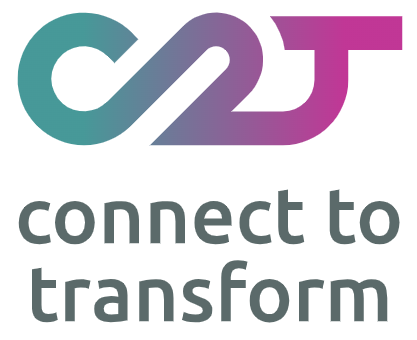
The “C2T - Connect to Transform” project aims to develop innovative solutions for the climate-neutral heating and cooling supply of Braunschweig's Bahnstadt district. These solutions are designed in a modular way to ensure transferability to other cities in Germany - a project with model character!
Bahnstadt Braunschweig is a 300-hectare district around the main railway station and serves as a direct demonstrator platform. Thanks to the involvement of local partners, existing electricity and heat supply networks can be transformed and thus make an important contribution to achieving climate protection targets in the urban area of Braunschweig.
Further Information can be found here:
| Partner: | Stadt Braunschweig |
| siz-energieplus | |
| Technische Universität Braunschweig - elenia Institut für Hochspannungstechnik und Energiesysteme | |
| Technische Universität Braunschweig - Institut für Städtebau und Entwurfsmethodik | |
| Technische Universität Braunschweig - Institut für Psychologie | |
| RWTH Aachen - Lehrstuhl für Software Engineering | |
| BS|Energy | |
| synavision GmbH | |
| CUBOS GmbH | |
| Associated Partner: | SMA Solar Technology AG |
| Duration: | 10/01/2024 – 09/30/2027 |
| Person in charge at elenia: | Eike Niehs |
| Henrik Wagner | |
| Carsten Wegkamp | |
| Head of project: | Dr. Stefan Plesser (synavision) |
| Thomas Wilken (siz energie+) | |
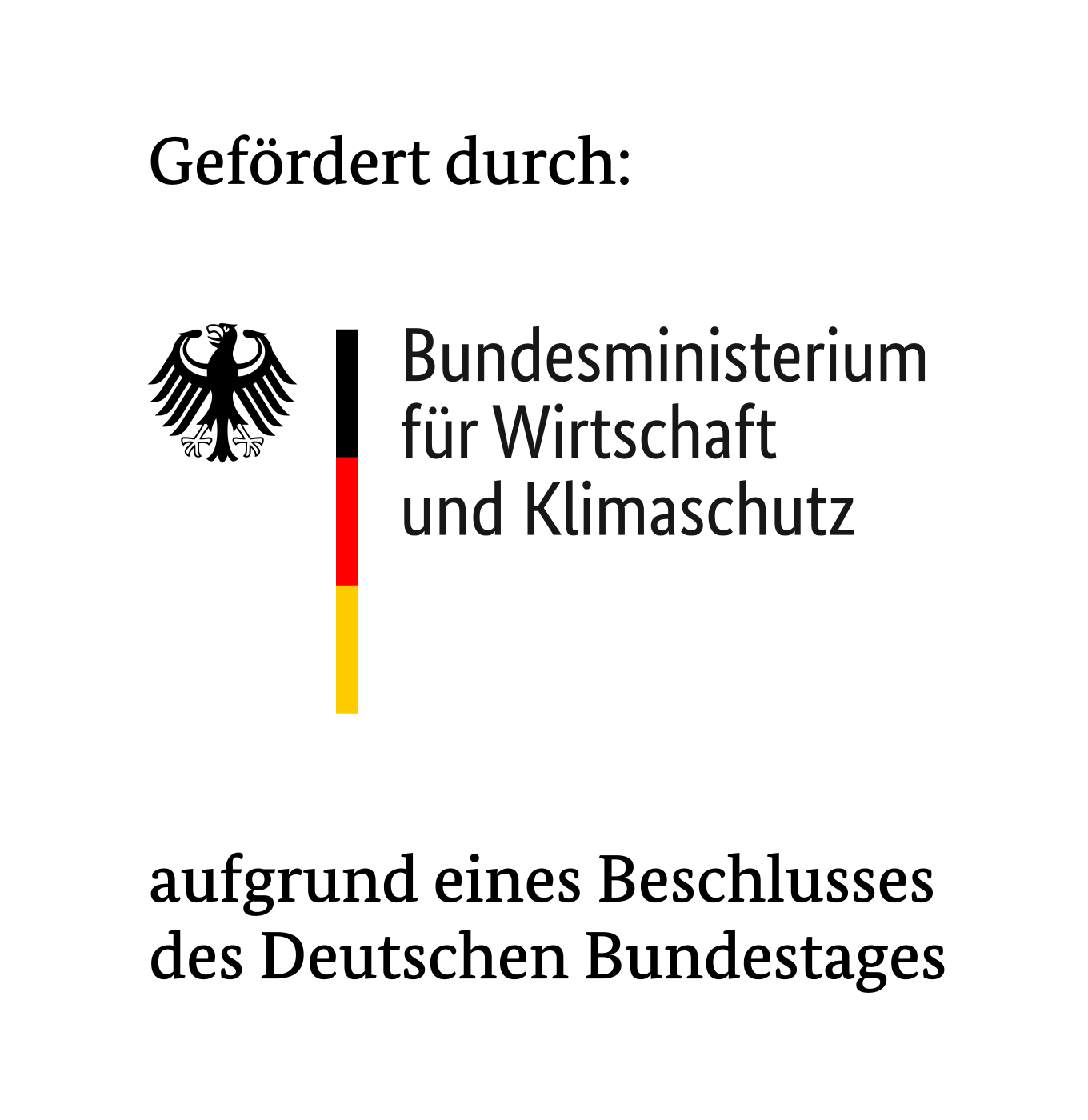 |
Lithium-sulfur batteries have higher specific energy, more environmentally friendly components, and lower material costs compared to lithium-ion batteries. In addition, the liquid and flammable electrolyte poses a safety risk that plays an important role in transportation applications. Therefore, solid electrolytes represent a promising class of materials, which can increase the safety and improve the energy density. Polymer-based solid electrolytes in particular are an attractive materials science approach that both enhances safety and suppresses the shuttle effect. By introducing functionalized fillers into the polymer matrix, the material parameters can be adjusted very flexibly, in particular the ionic conductivity can be increased and so-called hybrid polymer-based solid electrolytes can be obtained. This class of materials has the potential to be scalably synthesised and easy to process, making it promising for industrial use.
For the improvement of the material parameters of the solid electrolyte, a traceable and reliable quantitative analysis is needed for a complete understanding of transport and conversion processes. For this, multidimensional in-operando methods, ex-situ investigations on a broad scale and spectroscopic investigations at the electrode/electrolyte interfaces are very promising approaches to provide important insights into the complex reaction and transport mechanisms. Therefore, the overall goal of this project is to fabricate high-performance Li/S pouch cells (multilayers) with novel hybrid polymer solid electrolyte and a kinetically optimized cathode.
| Partner: | Helmholtz-Zentrum Berlin für Materialien und Energie – Institut für Elektrochemische Energiespeicherung (HZB – EC) |
| E-Lyte Innovations GmbH | |
| Universität Potsdam – Institut für Chemie (IfC) | |
| Helmholtz-Zentrum Berlin für Materialien und Energie – Institut für angewandte Materialien (HZB-IG) | |
| TU Braunschweig – Institut für Partikeltechnik (iPAT) | |
| Physikalisch-Technische Bundesanstalt (PTB) | |
| Person in charge at elenia: | Marvin Nebelsiek |
| Head of project: | Dr. Sebastian Risse (HZB) |
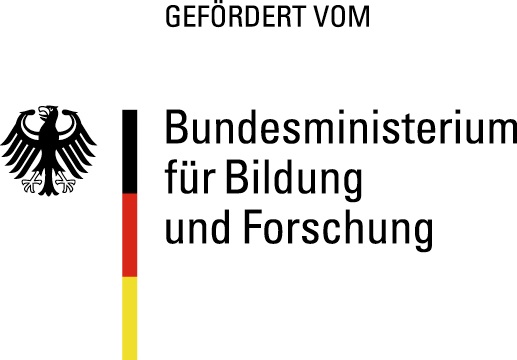

In the context of current political goals and the associated increasing dependence on electrical energy, driven by the transportation and heating sectors, a significant shift is taking place in electricity generation: away from large generation plants with synchronous generators towards smaller, converter-based generation plants. This shift is largely being driven by the increasing use of photovoltaic and wind power plants, which are also often integrated into the distribution grid. This development poses major challenges for the energy supply system, but also offers opportunities in terms of system services such as control energy, instantaneous reserve or voltage maintenance. The “Fuchstal leuchtet” research project is dedicated to this problem. In the Fuchstal energy future real laboratory, research is being carried out into whether stable grid operation is possible in practice with state-of-the-art systems, provided that frequency and voltage stability can be guaranteed without higher-level communication on grid dynamics. Together with the elenia Institute of the Technical University of Braunschweig, the Munich University of Applied Sciences, the municipality of Fuchstal and LEW Verteilnetz, the following research question is to be answered:
How is stable grid operation possible in practice in a grid without a central control structure that is fed and loaded exclusively by power converters?
The research project consists of the following sub-areas:
| Partner: | Hochschule München |
| Technische Hochschule Augsburg | |
| Gemeinde Fuchstal | |
| TU Braunschweig | |
| Associated Partner: | LEW Verteilnetz |
| Duration: | August 2023 - Juli 2026 |
| Person in charge at elenia: | Till Garn |
| Head of project: | Prof. Dr. Georg Kerber (Hochschule München) |
 |
The aim of the GFI Pilot research project is to pilot grid-forming battery converters at all voltage levels of the distribution grid and to develop operating strategies for these battery storage systems to provide instantaneous reserve in preparation for the general roll-out of this new technology. This research and field test project will make a significant contribution to the roll-out of grid-forming battery power converters in the distribution grid. The piloting of such systems is an essential part of the necessary investigations to ensure system stability despite the future challenges of a system with 100% renewable energy penetration. A sub-grid in the area of the Thuringian energy grids, in which black start and island grid formation have already been successfully tested, is to be used for the pilot testing of GFI systems. All operating modes (normal operation, island grid operation, grid restoration) will be carried out in a real grid in order to test GFI systems in the grid as comprehensively as possible.
The elenia Institute for High Voltage Technology and Energy Systems is concentrating on investigations into grid-forming inverters in the low voltage range and possible operating strategies. Before piloting in the field, operational conditions must be analyzed and a measurement and investigation program planned. Simulation studies will then be carried out to investigate grid regions in the event of various disturbance events and to test the parallel operation of several systems. Models for modeling the provision of instantaneous reserves will be developed and laboratory tests on individual systems will be planned. The grid-forming battery converters will then be tested in the field both in normal operation and in island grid operation with grid restoration. The results are to be analyzed below in order to derive recommendations for the introduction of GFI systems.
| Partner: | TEAG Thüringer Energie AG |
| Fraunhofer IEE | |
| p&m Power Consulting GmbH | |
| Vattenfall Wasserkraft GmbH | |
| TU Braunschweig | |
| Associated Partner: | VDE FNN |
| SMA Solar Technology AG | |
| 50Hertz Transmission GmbH | |
| Duration: | 01/01/2025 – 12/31/2028 |
| Person in charge at elenia: | Merle Ferk |
| Timo Sauer | |
| Head of project: | Dr. Matthias Sturm (Thüringer Energie AG) |
 |
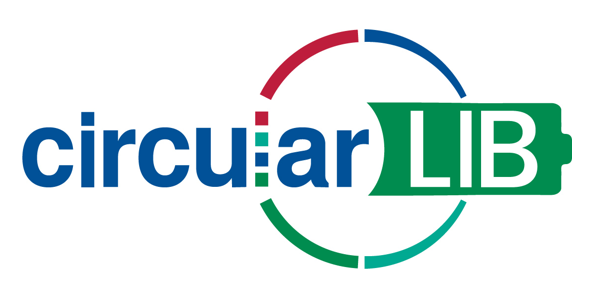
The project Graduiertenkolleg CircularLIB is a cross-location interdisciplinary graduate program at the interface of natural sciences, engineering and economics for the establishment of an economically efficient and ecologically sustainable circular economy.
In addition to sustainable system design (lifecycle considerations, economic/ecological assessment and the development of a data-driven approach), the research topics for the holistic and coordinated mapping of the battery material cycle will be systematically explored. Process and/or intermediate products intertwine at the interfaces.
The project is divided into four research fields: sustainable system design, material/cell aging, recycling processes and material recovery (hydrometallurgy, resynthesis/reconditioning of active material). In addition to interdisciplinary research in a key technology area, the Research Training Group offers professional and interdisciplinary support within the framework of a qualification program. In this way, the PhD students will be prepared for tasks in industry and research institutions and the battery cluster of the Braunschweig region will be strengthened in the long term.
Objective Project 2-2 at elenia: State determination and characterization of contaminated and aged battery cells
| Partner: | Ifs – Institute of Joining and Welding (TU BS) |
| ITC - Institute for Technical Chemistry (TU BS) | |
| IWF - Institute for Machine Tools and Production Technology (TU BS) | |
| iPAT - Institute for Particle Technology (TU BS) | |
| InES - Institute for Energy and Process Systems Engineering (TUBS) | |
| IÖNC - Institute of Environmental and Sustainable Chemistry (TU BS) | |
| KI - Institute for Construction Technology (TU BS) | |
| AIP - Institute for Automotive Management and Industrial Production (TU BS) | |
| IAP - Institute of Applied Physics (TU BS) | |
| IFAD – Institute of Mineral and Waste Processing, Recycling and Circular Economy Systems (TU Clausthal) | |
| IOC - Institute for Organic Chemistry (TU Clausthal) | |
| ICVT- Institute of Chemical and Electrochemical Process Engineering (TU Clausthal) | |
| ISSE - Institute for Software and Systems Engineering (TU Clausthal) | |
| FKP - Institute of Solid State Physics (Leibnitz University Hannover) | |
| Fraunhofer IST | |
| Duration: | 03/01/2021 – 02/28/2025 |
| Person in charge at elenia: | Anna Rollin |
| Head of project: | Prof. Dr.-Ing. Michael Kurrat |
Sponsored by SPRUNG of the Volkswagen Foundation.
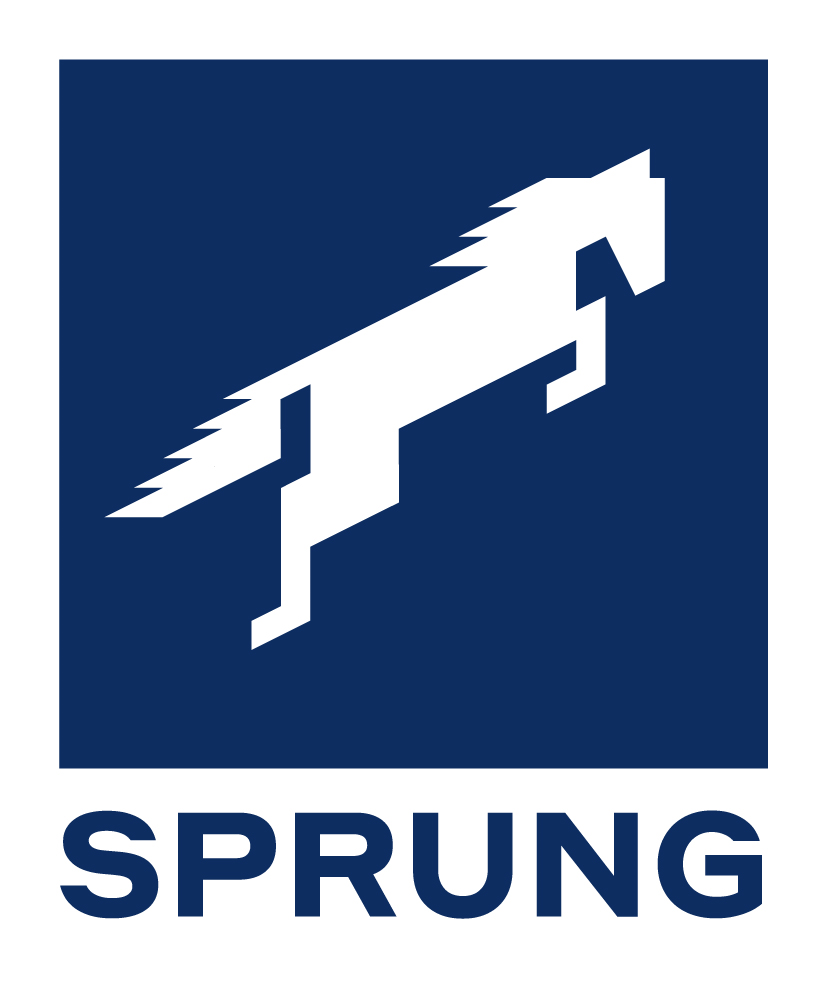
With the national goal of achieving climate neutrality by 2045, sustainability issues are at the forefront of German policy, especially in the energy sector (see Coalition Agreement 2021-2025). In view of a changing and increasingly decentralized grid structure and challenges posed by factors such as increasing electromobility or the expansion of renewable energies, manufacturers and operators of future more sustainable energy distribution systems, especially in the area of medium-voltage grids, are facing major challenges in terms of efficiency and security of supply while at the same time facing increasing cost pressure. Switchgear is a key component of these distribution grids. As a central element for junctions between distribution and consumers, they guarantee reliable and safe operation, usually over several decades.
The aim of the proposed funding project is to rethink the constructive design of medium-voltage switchgear as key components of the energy distribution system over the entire product life cycle and to make it more sustainable in order to make a substantial contribution to the energy transition in Germany.
| Partner: | ABB AG Forschungszentrum Deutschland |
| Forschungsinstitut für Rationalisierung e.V. (FIR), RWTH Aachen | |
| Wuppertal Institut für Klima, Umwelt, Energie gGmbH | |
| Albert-Ludwigs-Universität Freiburg - Institut für Nachhaltige Technische Systeme – INATECH | |
| Economic partner: | SÜC Energie und H20 GmbH |
| Jakob Becker Entsorgungs-GmbH | |
| Person in charge at elenia: | Nils Rosebrock |
| Timo Meyer | |
| Head of project: | Samuel Rader (ABB AG Forschungszentrum Deutschland) |
 |
The greatest challenge of the energy transition remains the transport and storage of renewable energies as well as their use in the heat and mobility sectors. One solution is emerging in conjunction with hydrogen technology. Surplus regenerative yields can be converted into hydrogen (H2) by power to gas and thus made storable. Energy is made available again through the use of fuel cells.
The joint project H2-Terminal, led by the Steinbeis-Innovationszentrum energieplus, aims to establish a hydrogen competence center at the TU Braunschweig campus. This will enable integrated modeling, simulation and testing of technologies in a real laboratory along the hydrogen conversion chain. This will enable application-oriented basic research in the newly created center or research laboratory. The overall project is divided into two subprojects:
| I. | Planning, construction and monitoring of the hydrogen competence center | |
| II. | Scientific monitoring of the establishment of the hydrogen competence center |
Within the framework of the H2-Terminal, elenia coordinates sub-project II of the scientific monitoring of the establishment of the hydrogen competence center by the seven university institutes and the business division 3 of the TU Braunschweig. Furthermore, elenia is responsible for the work area of grid and system integration of the hydrogen competence center. The focus of investigation is the battery storage to be installed in the hydrogen competence center and the design of possible operating modes with the primary goal of ensuring a steady production of green hydrogen.
| Partner: | Steinbeis Innovationszentrum energieplus |
| Institut für Städtebau und Entwurfsmethodik | |
| Institut für Werkzeugmaschinen und Fertigungstechnik | |
| Institut für Energie- und Systemverfahrenstechnik | |
| Institut für Verbrennungskraftmaschinen | |
| Institut für Technische Chemie | |
| Institut für Bauklimatik und Energie der Architektur | |
| Geschäftsbereich 3 der TU Braunschweig | |
| Duration Project part I: | 01.11.2020 bis 30.04.2025 |
| Duration Project part II: | 01.06.2021 bis 30.05.2025 |
| Person in charge at elenia: | Timo Sauer |
| Head of Project: | Prof. Dr.-Ing. M. Norbert Fisch |
| (Steinbeis Innovationszentrum energieplus) |
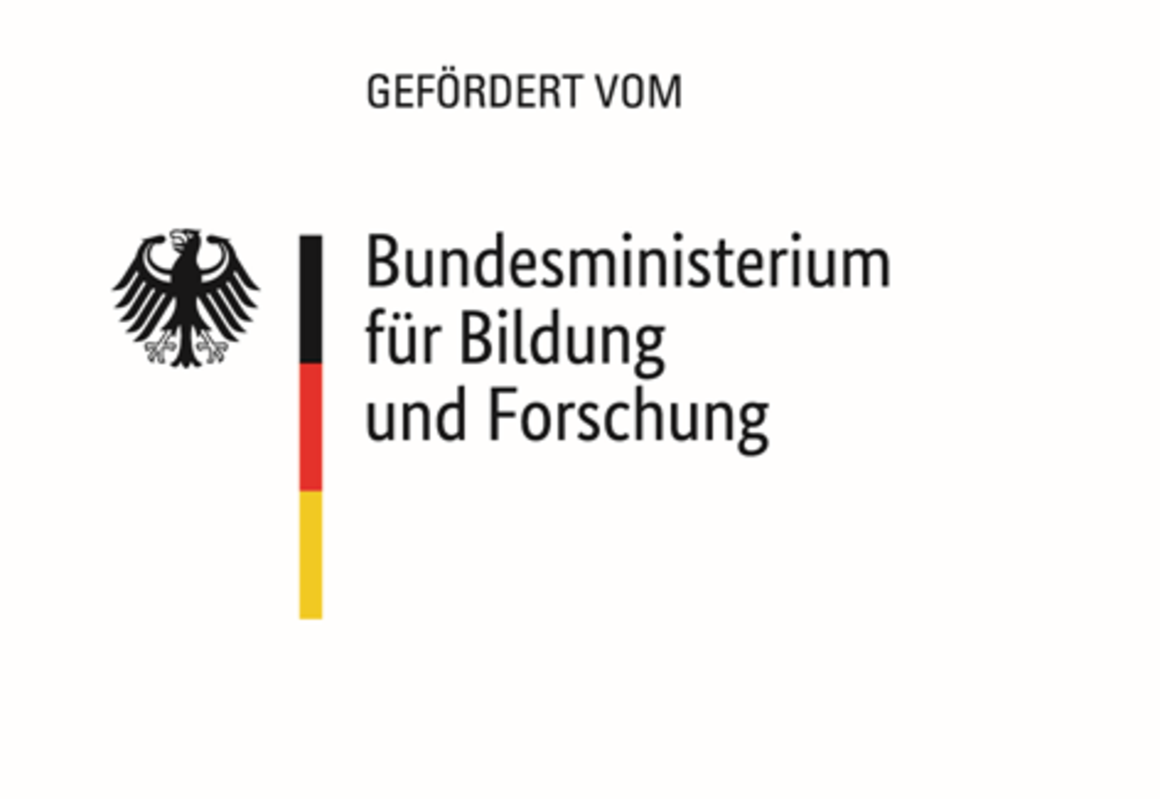
The research project KEMAL „Kundenorientiertes Energiemanagement mit autonomer Lastregelung“ considers the extension and exhaustive testing of German standards regarding the Smart Metering system. Extended functionalities enable new and innovative residential energy management approaches while focusing on customer needs. We consider methods for prioritization of single consumption devices and new tariff options in the smart meter gateway (SMGW) that are sensitive to external or internal events. These tools may be helpful to equally incorporate the interests of the grid, the market, and the customer.
At elenia, our focus is the development of a Home Energy Management System (HEMS) for the standard-compliant connection of fully flexible prosumers. Furthermore, we test the HEMS in our lab and an isolated realistic environment. We ensure a high grade of innovation by using feature-integrating SMGW devices developed by EMH metering and through a trial of new use cases for prioritized charging of electric vehicles, which will be well-designed at the University of Applied Science Biberach.
| Partner: | EMH metering GmbH & Co. KG |
| Hochschule Biberach | |
| Person in charge at elenia: | Eike Niehs |
| Julien Essers | |
| Head of project: | Dr. Rainer Frank (EMH) |
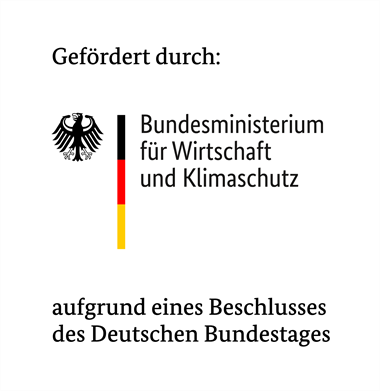

The MetroSDL project aims to research the metrological basis for new types of ancillary services (AS) that are required as part of the System Stability Roadmap developed by the Federal Ministry for Economic Affairs and Climate Protection (BMWK) and published in 2023. An important part of this roadmap is maintaining system stability by replacing the inertia of rotating masses in conventional power plants with converter-based generation plants such as wind, photovoltaic and battery power plants. For this reason, Section 12h of the Energy Industry Act (EnWG) defines “local grid stability inertia” as a new “non-frequency-based” system service that is to be procured on the market by the transmission system operators in future.
The market-based procurement of these ancillary services requires the metrological basis for determining numerous variables derived from current and voltage, including the determination of inertia and start-up time constants for grid-forming control processes as well as dynamic frequency determinations. In addition, frequency-bound system services, such as fast primary control power, can be an important supplement to the instantaneous reserve provided by inverters. To this end, the existing grid-following control concepts must be further developed and supplemented with highly dynamic measurement methods. Their grid-supporting behavior must be proven.
This measurement and control technology work is essential for the pre-qualification, certification and billing of new system services using inverter-based systems in the grid, which are intended to provide the aforementioned instantaneous reserve and fast primary control power. As part of MetroSDL, these basic principles are being worked out, various control concepts developed and implemented and evaluated on functional models in the laboratory.
The focus of MetroSDL is on:
| Partner: | Physikalisch-Technische Bundesanstalt (PTB) |
| Duration: | July 2023 - June 2026 |
| Person in charge at elenia: | Frederik Tiedt |
| Stefan Klöpping | |
| Stefanie Walujski | |
| Head of project: | Dr. Florian Schilling (PTB) |
 |
The new requirements (higher voltage levels, switching frequency) require a further development of the vacuum interrupter technology. To this end, new insights must be gained through simulations and experiments in order to better understand the propagation of the metal vapor plasmas and the movement of the local spots. The focus is on determining the current distributions in the contact gap. Together with the arc voltage and the sheath, current densities and plasma conductivities can be determined from the current distributions. These, together with the radiation and its spectral distribution, provide information about the temperature and pressure both in the plasma column and in the local spots. In this way, the knowledge of the behavior of metal vapor plasmas can be further developed and completed.
The main goal is to determine the current distribution in the contact gap as well as the current density distributions in the plasma column from the magnetic flux density profiles and the optical radiation intensity profiles. This involves the coupling and further development of magnetic and optical measurement methods. The simultaneous measurement of magnetic field and optical radiation allows to answer the question of where exactly the current flows, in the core or on the shell of the plasma column. From the radiation measurements, conclusions can be drawn about charge carrier densities and electron mobilities in the outer shell, since the radiation propagates diffusely in the plasma column, like in a fog. This requires the creation of a common experimental setup, the respective further development of the measurement methods, and the adaptation of the evaluation methods to allow the combination of both methods.
| Partner: | Fachgebiet Hochspannungstechnik der TU Darmstadt (HST) |
| Person in charge at elenia: | Timo Meyer |
| Karen Flügel | |
| Head of project: | Prof. Kurrat |

In the Netflexum project, new possibilities for the provision of grid services are being researched, in particular the provision of instantaneous reserve through new types of grid-serving prosumer systems. For this purpose, the use cases from the grid and user perspective are determined and the requirements for prosumer systems, consisting of photovoltaics, 2nd-life storage and electric vehicles, are derived. Furthermore, novel operational applications of individual power electronic circuits are tested in the project with regard to their reliability and lifetime for new topologies. In the case of power electronics, the focus is on insulating, non-galvanically isolated systems. In the case of instantaneous reserve call-up, it must be possible to overload the power electronics for a short time period. For the power semiconductors used, it must therefore be demonstrated that short-term power peaks do not negatively affect the lifetime. For the already aged 2nd-life vehicle batteries, these power peaks also represent a potential factor which can limit the lifetime. For this purpose, a residual life assessment for batteries is to be carried out, a DC protection concept is to be developed and this is to be tested in a DC demonstration grid with direct and indirect connection of the battery system. Only by considering the entire system it is possible to optimize it economically without any loss of reliability and safety.
| Partner: | SMA Solar Technology AG |
| Temes Engineering GmbH | |
| Physikalisch-Technische Bundesanstalt | |
| Associated Partner: | Volkswagen AG |
| Braunschweiger Netz GmbH | |
| Person in charge at elenia: | Lukas Ebbert |
| Johanna Grobler | |
| Fabian Witt | |
| Head of project: | Prof. Dr.-Ing. Regine Mallwitz (IMAB) |


The PICNIC project will investigate the practical and technology-neutral design and requirements of efficient power quality control, taking into account decentralized components (charging infrastructure and storage systems) and decentralized smart metering systems and the resulting digital control options. To this end, new controls and links between controls are being investigated and control concepts and use cases defined for various power quality characteristics such as flicker, harmonics, unbalance and rapid voltage changes.
For the components mentioned, the controls are tailored to prosumer households and, taking into account static and dynamic limits and gradients, component behavior that serves the grid and reduces interference is generated. A central focus point is the linking of the intelligent metering systems with the smart meter gateway for communication between the decentralized components and the grid operators.
In the project, a variety of control concepts in decentralized (at component level), decentralized-coordinated (at prosumer level) and centralized (via grid operators) application options are being investigated and communicating control options compared. The investigations analyze the best possible applications and compare the control options in such a way that the project results lead to technology-open practical regulations for the components across all investigation levels and the best possible control options (decentralized-coordinated and centralized). Existing practical restrictions and the need for further development will be identified through practical implementation.
| Partner: | RWTH Aachen IAEW |
| FGH e. V. | |
| VIVAVIS AG | |
| Associated Partner: | Bayernwerk Netz GmbH |
| BS|NETZ | |
| SMA Solar Technology AG | |
| Phoenix Contact Electronics | |
| PION Technology AG | |
| Duration: | 01.06.2024 – 31.05.2027 |
| Person in charge at elenia: | Julien Essers |
| Robin Herman | |
| Gian-Luca Di Modica (bis 2025) | |
| Cornelius Biedermann (bis 2025) | |
| Head of project: | Prof. Dr.-Ing. Bernd Engel |
 |

The SysStab2030 project deals with the question of how the European interconnected system can continue to be operated stably with up to 100% renewable energy in the future. It accompanies the Roadmap System Stability adopted by the German government in 2023.
The energy transition and the associated change in the generation and consumer structure are associated with challenges that affect various aspects of system stability. Historically, the interconnected grid has been based on large power plants with synchronous generators, whose characteristics characterize the system. With the energy transition, however, these are increasingly being replaced by renewable energies, which can be found at all voltage levels and are mostly connected via power electronics. The stabilizing properties will therefore have to be provided alternatively in the future.
Specifically, the project aims to identify system requirements that arise as a result of the changes described above. The potential of various systems to meet these needs will also be researched.
The elenia focuses on the instantaneous reserve. This is an immediately available power reserve that was traditionally provided by synchronous generators thanks to their inertia. In future, so-called grid-forming inverters will also have to be used here, the properties and effects of which on grid stability are the subject of research.
The large, cross-steakholder consortium also encourages exchange across many of the groups involved.
| Partner: | Amprion GmbH |
| TransnetBW GmbH | |
| 50Hertz Transmission GmbH | |
| Tennet TSO GmbH | |
| Fraunhofer IEE – Fraunhofer-Institut für Energiewirtschaft und Energiesystemtechnik | |
| Universität Kassel - Fachgebiet Energiemanagement und Betrieb elektrischer Netze | |
| Universität Stuttgart – Institut für Feuerungs- und Kraftwerkstechnik (IFK) | |
| Universität Rostock - Institut für elektrische Energietechnik | |
| HTW Berlin – Fachbereich 1 Energie und Information | |
| FGH e.V. - Forschungsgemeinschaft für Elektrische Anlagen und Stromwirtschaft | |
| FGH Zertifizierungsgesellschaft mbH | |
| DIgSILENT GmbH | |
| Associated Partner: | Avacon Netz GmbH |
| Bayernwerk Netz GmbH | |
| E.DIS GmbH | |
| Enercon GmbH | |
| Netze BW GmbH | |
| RWE Generation SE | |
| SMA Solar Technology AG | |
| Westenergie AG | |
| Westnetz GmbH | |
| Duration: | Juli 2024 - Dezember 2026 |
| Person in charge at elenia: | Sofie Brammer |
| Head of project: | Dr. Moritz Mittelstaedt (Amprion) |
 |
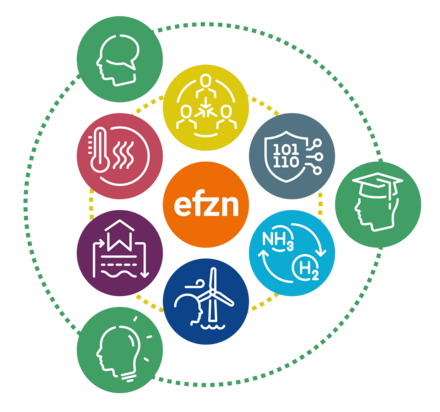
The TEN.efzn research project is massively expanding interdisciplinary and cross-location energy research in Lower Saxony. Organized into six research platforms, 18 research partners with around 180 researchers are working on innovative fields of research to advance the transformation of the energy system.
The elenia Institute at TU Braunschweig is part of the “Trustworthy digitalization of safety-critical energy systems” platform. Here, the institute investigates disruption scenarios and vulnerabilities that can occur as a result of increasing digitalization. Furthermore, interfaces between people and technology are being established in order to ensure that different stakeholders can influence operations with targets and transparency. The focus is on the residential sector, for which innovative energy management algorithms are being developed that automatically detect faults and initiate fallback strategies.
The five-year project is funded by zukunft.niedersachsen, a joint program of the state of Lower Saxony and the Volkswagen Foundation. With a funding sum of 58.2 million euros, the highest sum ever approved for a cross-location research program in energy research, the strategic further development of Lower Saxony's energy research will be supported until 2030.
| Partner: | Carl von Ossietzky Universität Oldenburg |
| Deutsches Zentrum für Luft- und Raumfahrt | |
| Fraunhofer - Institut für Windenergiesysteme (IWES) | |
| ForWind – Zentrum für Windenergieforschung | |
| Georg-August-Universität Göttingen | |
| Leibniz Universität Hannover | |
| Helmholtz-Zentrum Hereon | |
| HAWK Hochschule für angewandte Wissenschaften und Kunst Hildesheim/Holzminden/Göttingen | |
| Institut für Solarenergieforschung GmbH Hameln (ISFH) | |
| LIAG-Institut für Angewandte Geophysik | |
| OFFIS – Institut für Informatik | |
| Physikalisch-Technische Bundesanstalt (PTB) | |
| Steinbeis-Innovationszentrum energieplus | |
| Technische Universität Braunschweig | |
| Technische Universität Clausthal | |
| Universität Vechta | |
| Person in charge at elenia:: | Michel Meinert |
| Marcel Lüdecke | |
| Head of project: | Prof. Dr. Sebastian Lehnhoff |
| Sponsored by: |  |
The Distribution Grid2030+ project is developing innovative solutions for the safe and efficient operation of electricity grids, particularly under the conditions of high converter penetrations in the low and medium-voltage grid. The first focus is on adapting grid protection and ensuring high voltage quality. In view of the changed grid characteristics due to high converter penetrations, traditional protection mechanisms can be impaired. The project therefore aims to develop solutions that ensure system stability and reliability. This includes investigating grid behavior under conditions such as high unbalance or unwanted sub-grid formation in order to develop and implement suitable measures to shut down these sub-grids.
Another important aspect of the project is the conversion and parameterization of converter systems. In order to ensure grid stability even under extreme conditions, the stability and parameterization of grid-forming converters are being analysed and adapted to the distribution grid. To this end, methods and dynamic solutions previously used at transmission grid level are being transferred to the lower voltage levels. This ensures that these solutions can function for the more demanding requirements of distribution grids and that the high-performance systems remain stable.
The third key area concerns the unwanted formation of sub-grids and system stability. Due to the autonomous operating characteristics of grid-forming converters, there is a risk of independent island grids forming, which are difficult for grid operators to monitor. The project is developing reliable disconnection solutions to minimize these risks. At the same time, the potential advantage of decentralized grid formation in the event of large-scale grid failures is also being investigated in order to promote resilience and safe operation under these conditions. If the various aspects of the system are considered holistically, economic optimization can be achieved without compromising the safety and reliability of the grid.
| Partner: | Fraunhofer IEE |
| SMA Solar Technology AG | |
| Associated Partner: | Forum Netztechnik/ Netzbetrieb im VDE (VDE FNN) |
| Westenergie AG | |
| Bayernwerk Netz GmbH | |
| Stromnetz Hamburg GmbH | |
| Braunschweiger Netz GmbH | |
| SWW Wunsiedel GmbH | |
| Amprion GmbH | |
| Siemens AG | |
| Smart Infrastructure | |
| Person in charge at elenia: | Max Gand |
| Nelly Schulz | |
| Björn Oliver Winter | |
| Head of project: | Prof. Dr.-Ing. Bernd Engel |
Digitization is a global megatrend that enables new functions and processes across industries and networks. In the safety-critical energy system, digitization is creating new interactions and sensitive interdependencies that on the one hand promise more efficient and sustainable operation, but on the other hand, are largely unexplored in terms of their technical challenges and stability on a systemic and large scale. The Center for Digital Innovations Lower Saxony (ZDIN) therefore established the “Future Laboratory Energy" (ZLE) for further research on this topic.
The target of the ZLE is to investigate interactions in highly integrated quarter ICT and energy systems and to develop a platform for networking researchers and users to support the transfer of these and, prospectively, other research results. This results in the following two project pillars for the processing area of digitalized energy systems:
| Partner: | OFFIS e.V. |
| Institut für Vernetzte Energiesysteme, Deutsches Zentrum für Luft- und Raumfahrt (DLR) | |
| Institut für Wirtschaftsinformatik, Leibniz Universität Hannover (LUH) | |
| Abteilung Elektrotechnik und Informatik, Hochschule Emden/Leer (HS EL) | |
| Abteilung Digitalisierte Energiesysteme, Universität Oldenburg (UOL) | |
| Institut für energieoptimierte Systeme, Ostfalia Hochschule (HS OF) | |
| Associated Partner: | EWE Netz |
| Enercity Hannover | |
| Avacon | |
| Buderus | |
| Solvis | |
| Schulz Systemtechnik | |
| BTC | |
| KEHAG | |
| VEA – Bundesverband der Energieabnehmer | |
| Nibelungen Wohnbau | |
| Duration: | 01.10.2019 – 30.09.2024 |
| Person in charge at elenia: | Henrik Wagner |
| Head of project: | Prof. Engel |
Supported in Lower Saxony in advance by:


Supervised by:
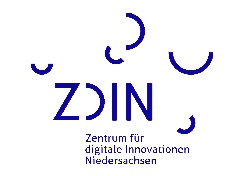
The energy consumption of industry and private households often does not coincide with the generation of energy by wind, sun or water. In countries with large topographical differences in altitude, technically established pumped storage power plants help to temporarily store part of the energy as needed. The ALPHEUS project, which also involves the Technical University of Braunschweig with the Leichtweiß Institute for Hydraulic Engineering - Department of Hydromechanics, Coastal Engineering and Lake Engineering and the elenia Institute for High Voltage Technology and Electrical Power Systems, is now working on solutions so that areas in the lowlands can also benefit from this actually well-known technology.
Due to slow grid expansion, current power grids are not yet capable of absorbing the fluctuations of renewable energy sources such as wind energy without resorting to fossil-fuel power plants emitting climate-damaging CO2 or temporarily throttling their feed-in again and again. In mountainous regions such as Germany's low mountain ranges and the Alps, pumped storage power plants (PSP) relieve the strain on the grids. But what do regions do that do not have the natural topography with large differences in elevation in the landscape required for PSP?
The ALPHEUS project is developing conceptual designs for new and retrofitted low head PSP reservoirs. A comprehensive assessment of the mechanical, electrical, and structural components will allow the costs of these systems to be determined and the risks to be evaluated. Information and decision support tools are being developed to disseminate knowledge to the community.
In addition to developing the appropriate turbine technology that can operate efficiently in both pumping and turbine modes at low heads and exploring the siting potential for new and retrofit pumping systems and basins, elenia is primarily investigating the impact on power system stability.
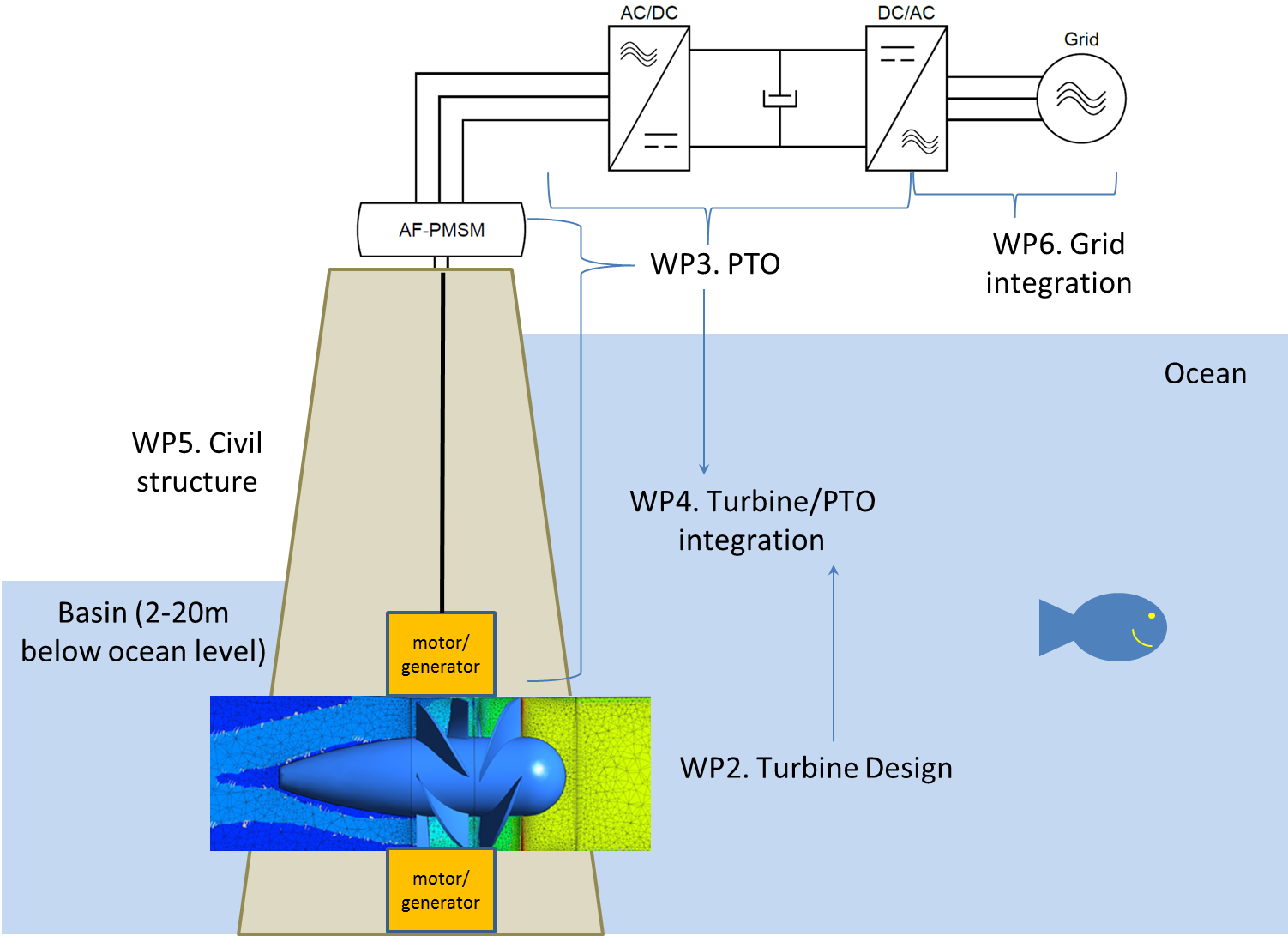
Project concept of 'ALPHEUS'
For this purpose, scientists from elenia at the TU Braunschweig are modeling special converter units for feeding the generated power into the interconnected grid. Then measuring its impact on the grid and evaluate the extent to which such power converters can contribute to stabilizing the interconnected grid in a variety of ways besides simply feeding power into it. This will allow an evaluation, how larger power grids will respond to decentralized energy storage.
| Partner: | Universität Stuttgart, DE |
| ADVANCED DESIGN TECHNOLOGY LIMITED, UK | |
| TECHNISCHE UNIVERSITEIT DELFT, NL | |
| UNIVERSITA DEGLI STUDI DELLA TUSCIA, IT | |
| UNIVERSITE DE PAU ET DES PAYS DE L'ADOUR, FR | |
| CHALMERS TEKNISKA HOEGSKOLA AB, SE | |
| NORGES TEKNISK-NATURVITENSKAPELIGE UNIVERSITET NTNU, NO | |
| UPPSALA UNIVERSITET, SE | |
| BLUE TURBINES BV, NL | |
| UNIVERSITEIT GENT, BE | |
| STICHTING IHE DELFT INSTITUTE FOR WATER EDUCATION, NL | |
| Duration: | 01.04.2020 – 31.03.2024 |
| Person in charge at elenia: | Frederik Tiedt |
| Head of Project: | Dr. Jeremy Bricker |
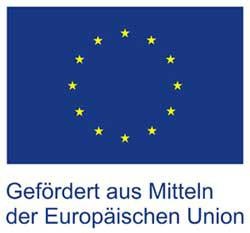
The BASIS (Building Automation with a Scalable and Intelligent System) research project is developing a system for cross-trade building automation. This project, funded by the BMWi (via AIF VP), forms a powerful consortium with 8 project partners for the development of a new building technology. Synergies between energy management, technical building equipment (TGA), ambient assisted living and smart home functionalities are considered. The technical implementation is based on a SmallCAN bus system developed at the TU Braunschweig, which differs from systems currently available on the market by its level of detail and the very low energy consumption of the control electronics. In the context of this research project, elenia is concerned with energy management. A fine-grained network of generators, storage units and consumers at the household level and the exchange of data with the other trades and external information sources form the data basis. A scalable system is being developed that can be used in single-family homes and can also be expanded to meet specific application requirements. In cooperation with Nibelungen Wohnbau, demonstrator apartments will be equipped in the course of the project in order to test the system in practice.
| Partner: | Digitale Signalverarbeitungssysteme & Informationstechnik GmbH, Bremen | ||
| DOMOLOGIC Home Automation GmbH, Braunschweig | |||
| Peter L. Reichertz Instituts für Medizinische Informatik, MHH | |||
| Dröge Baade Drescher GmbH & Co. KG, Salzgitter | |||
| Hermes Systeme GmbH, Wildeshausen | |||
| Associated Partner: | Nibelungen Wohnbau, Braunschweig | ||
| Person in charge at elenia: | Stephan Diekmann | ||
| Head of project: | Prof. Engel |
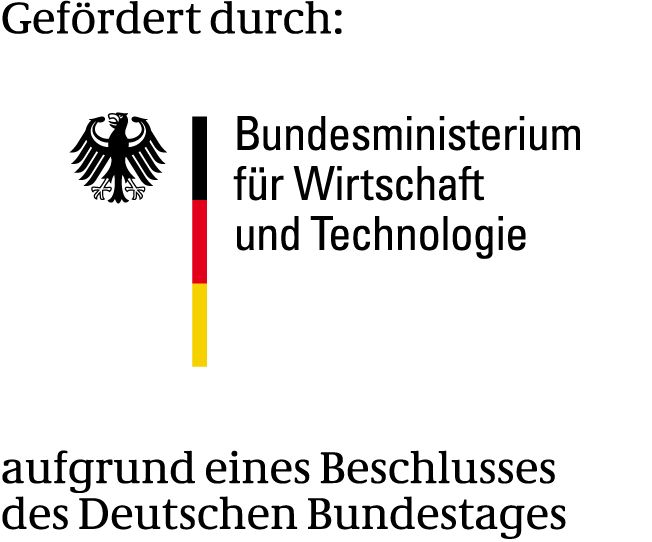
The aim of the project "Safety-related design of pouch cells with future high-performance materials - standardization of format and test procedures (BaSS - BatterySafetyStandardization)" is to develop a standardization of pouch cell formats by harmonizing the requirements from the German and Chinese markets and to correlate them with the associated safety tests. The consolidation and detailing of standards regarding cell geometry and the associated safety tests will lead to the following key findings: Future material developments (active and inactive material) as well as changes in production processes and parameters can be compared to a much greater extent. Ultimately, this can be used to reduce development efforts and thus increase efficiency in the product development of new material systems both nationally and internationally. In addition, standardized formats across countries can increase the safety of pouch cells while avoiding oversizing. In this way, distribution can be increased to achieve greater sales figures, and economies of scale can be exploited to make series development economically viable.
| Partner: | IK – Institut für Konstruktionstechnik |
| iPAT – Institut für Partikeltechnik | |
| IWF – Institut für Werkzeugmaschinen und Fertigungstechnik | |
| ifs - Institut für Füge- und Schweißtechnik | |
| Associated Partner: | CEAEC - Clean Energy Automotive Engineering Center (Tongji University - China) |
| NEPSI - National Supervision and Inspection Center for Explosion Protection and Safety of Instrumentation (China) | |
| Physikalisch-Technische Bundesanstalt – PTB | |
| Deutsche Kommission Elektrotechnik - DKE | |
| SGS Germany GmbH | |
| Stöbich technology GmbH | |
| Duration: | 04/01/18 – 03/31/2021 |
| Person in charge at elenia: | N.N. |
| Head of project: | Prof. Kurrat |
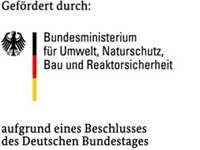
Since December 2015, the DaLion (DataMining in the Production of Lithium-Ion Battery Cells) project has been investigating the interdependencies and interactions within the production of lithium-ion battery cells. For this purpose, all relevant product and process characteristics as well as material and energy flows in the production system are systematically recorded and linked to an expert system using data mining methods. In this way, a database will be created that forms the basis for analysis, evaluation and decision support in the selection of input parameters and production processes as well as their modeling and simulation with regard to quality assurance and increased efficiency. The focus of elenia in this project is on the forming process step and the subsequent characterization of the cells with regard to their performance characteristics. Using a standardized forming process, the cells are formed and evaluated on the basis of a defined catalog of quality criteria. The goal is to use the holistic data acquisition, quality criteria and data mining methods to quickly draw conclusions about production influences.
| Partner: | iPAT - Institut für Partikeltechnik (TU BS) |
| IWF - Institut für Werkzeugmaschinen und Fertigungstechnik (TUBS) | |
| ifs - Institut für Füge- und Schweißtechnik (TUBS) | |
| InES - Institut für Energie- und Systemverfahrenstechnik (TUBS) | |
| IÖNC - Institut für Ökologische und Nachhaltige Chemie (TUBS) | |
| Lion Engineering GmbH | |
| Person in charge at elenia: | Kerstin Ryll |
| Head of project: | Prof. Kurrat |
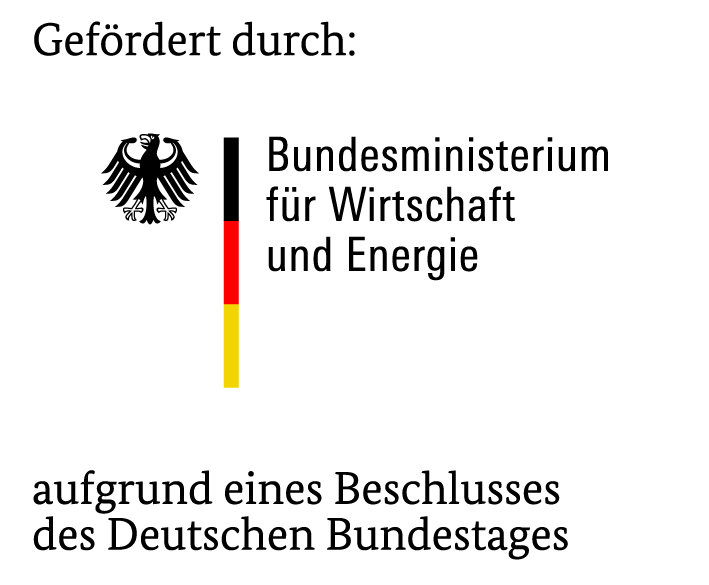
The "DaLion - 4.0" project aims to map the production of battery cells in cyber-physical systems, which represent the essential core content of Industry 4.0, by means of an overarching approach. The project is based on key findings from the "DaLion" project, in which the research consortium of the BatteryLab Factory (BLB) at the Technical University of Braunschweig has already done significant work towards greater transparency of influencing factors in battery cell production. Thematically, the project is investigating various overarching fields of action. In the sense of cyber-physical systems, control-capable models will be developed and created that are suitable for planning and targeted control of battery cell production. In order to increase the industrial applicability of the results, suitable quality management strategies will be developed, including improved tracking & tracing and the definition of quality gates. On the process side, the focus will be on electrode production (mixing, coating and drying), electrolyte filling and formation, complementingthe preliminary work of "DaLion". In addition, new process approaches such as lamination/stacking and suspension production via extrusion will be included in the analysis. In these and other processes, the integration of novel measurement techniques (e.g. inline X-ray and other imaging techniques, suspension characterization, control of storage conditions and input material quality) will be explored, further developed or qualified and integrated into the data warehouse. Finally, based on the improved data acquisition and the models to be created, concrete process improvements will be derived and prototyped or their effectiveness will be demonstrated. In addition, improved process management strategies will be developed based on the models.
| Partner: | Coperion GmbH |
| ISRA Vision AG | |
| FMP TECHNOLOGY GmbH | |
| MANZ AG | |
| GPS GmbH | |
| IWF - Institut für Werkzeugmaschinen und Fertigungstechnik (TUBS) | |
| iPAT - Institut für Partikeltechnik (TU BS) | |
| ifs - Institut für Füge- und Schweißtechnik (TUBS) | |
| InES - Institut für Energie- und Systemverfahrenstechnik (TUBS) | |
| IÖNC - Institut für Ökologische und Nachhaltige Chemie (TUBS) | |
| Associated Partner: | Ametek |
| BaSyTec | |
| C3 | |
| Custom Cells | |
| Freudenberg | |
| Fraunhofer ZESS | |
| Keysight | |
| Lödige | |
| Siemens | |
| WKM | |
| Person in charge at elenia: | Louisa Hoffmann |
| Head of project: | Prof. Kurrat |


The e-home energy project explores the energy supply of the future under real-life conditions. To this end, 32 households have been equipped with photovoltaic systems, modern air-conditioning technology, electric cars, smart meters and battery storages. An innovative grid technology, the controllable local power transformer, is also being used. The interaction of all these components in the low-voltage grid will be studied in this project. Elenia is primarily investigating battery storage technology. In addition to economic considerations, laboratory losses and grid effects are also being studied.
| Partner: | Avacon AG | ||
| EFZN (Energieforschungszentrum Niedersachsen) | |||
| Associated Partner: | Maschinenfabrik Reinhausen | ||
| Person in charge at elenia: | Hauke Loges | ||
| Head of project: | Prof. Engel |
The "elenia energy labs" project was launched on August 1, 2015, with the aim of expanding the laboratory capacities of the elenia Institute for High Voltage Technology and Electrical Power Systems at the TU Braunschweig. The project was funded by the German Federal Ministry for Economic Affairs and Energy with almost one million euros and actively supported by the Jülich project management organization.
As a result of the project, elenia has a new laboratory environment at its disposal: the laboratory areas of network dynamics and energy management. Although there is a spatial separation and a division of the existing laboratory equipment, there is the possibility of cross-laboratory investigations, such as the effects of a smart building on grid stability through performance and data technology couplings.
Grid Dynamics:
The Grid Dynamics Laboratory is used to study fast, dynamic processes in the grid, e.g. to draw conclusions about system and device behavior in the event of grid faults and system stability. Other research topics include the investigation of control concepts for the provision of system services by PV converters and the interaction of different distributed generation units.
The Grid Dynamics Lab includes a grid simulator, single string controller, RLC resonant circuit, line replica, full converter, PV inverter, and programmable loads.
Energy Management Laboratory:
The Energy Management Lab is used to study energy management concepts. Prosumer behavior in the context of electromobility, load management, and storage management are the focus of the research. Furthermore, different measurement and metering concepts are considered in the context of energy management.
The energy management laboratory is equipped with battery storage, PV simulators, charging stations and electronic loads. There is also a climate chamber, a heat pump, and several heat and cold storage units.
| Person in charge at elenia: | Frank Soyck |
| Stefanie Celan | |
| Florian Rauscher | |
| Head of project: | Prof. Dr.-Ing. Bernd Engel |

The goal of the follow-up project EnEff Campus 2020 is the realization of the conceptual implementation plan developed in EnEff Campus: blueMAP TU Braunschweig. The integrated concept consists of five strategies for the energy optimization of the campus. These will be implemented for the majority of the approximately 200 buildings on campus in a three-year follow-up project. In parallel, a comprehensive monitoring and evaluation concept will be established. The focus of the research is on the demonstration of the implementation measures and the development of an integrated technology research platform. Elenia is responsible for the strategic direction of the project's energy supply. Innovative concepts will be developed and implemented in the three sub-strategies of energy generation and storage, energy distribution and grid stability, and integration of electromobility into the supply grid.
| Partner: | Institut für Gebäude und Solartechnik (IGS) |
| Institut für Psychologie | |
| Institut für Städtebau und Entwurfsmethodik (iSE) | |
| Institut für Nachrichtentechnik (IfN) | |
| Institut für Betriebssysteme und Rechnerverbund (IBR) | |
| Gebäudemanagement der TU Braunschweig | |
| Steinbeis Innovationszentrum energie+ (SIZ e+) | |
| BS|Energy | |
| Person in charge at elenia: | Stefanie Celan |
| Lorenz Soleymani | |
| Head of project: | Prof. Kurrat |
| Prof. Engel |

As part of the Energy Efficient Campus research project, an Integral Energy Master Plan was first developed for the campus of the Technical University of Braunschweig. Based on an inventory, methods and tools were developed to reduce primary energy consumption by 40 % in the medium term and to supply the campus exclusively with renewable energy in the long term. The local energy supplier is involved in the conceptual planning. The interdisciplinary methods and tools will be used in teaching in the course of the project and in the implementation of the master plan (follow-up project Implementation & Monitoring) and will be passed on to other universities.
| Partner: | Institut für Gebäude und Solartechnik (IGS) |
| Institut für Städtebau und Entwurfsmethodik (iSE) | |
| Institut für Pflanzenbiologie (IfP) | |
| Gebäudemanagement | |
| Institut für Nachrichtentechnik (IfN) | |
| Associated Partner: | ITD (HBK) |
| BS|Energy | |
| HIS-Hochschulentwicklung | |
| Synavision | |
| Person in charge at elenia: | Benjamin Munzel |
| Head of project: | Prof. Kurrat |

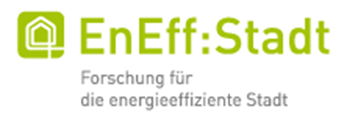
The aim of the Energy Toolkit project is to develop a methodology for the integrated simulation, operational management and monitoring of buildings and local infrastructure networks (electricity, heat, gas). The solution approach is based on the combination of existing methods and tools from different disciplines:
The application concept of the project is particularly oriented towards to the concrete requirements of network operators, cities and municipalities as well as manufacturers of &qout;SmartGrid components".
| Partner: | IGS - Institut für Gebäude- und Solartechnik |
| iVA – Institut für Verkehrssicherheit und Automatisierungstechnik | |
| Associated Partner: | Avacon AG |
| Braunschweiger Netz GmbH | |
| Stadtwerke München | |
| IBA Hamburg | |
| Person in charge at elenia: | Marcus Bunk |
| Stefanie Celan | |
| Head of project: | Prof. Engel |

The research project Energy-4-Agri deals with the investigation and modeling of overall concepts for agricultural systems with regenerative energy supply for the decarbonization of agriculture in the context of the energy transition.
Based on a detailed analysis of the energy demand in field cultivation, the prerequisites for the electrification of agricultural production systems are investigated. Using methods such as design thinking and scenario techniques, possible developments and conceivable futures will be worked out. Alternative structural and technological concepts and their effects will be considered in a merged modeling approach. The extensive changes in the energy sector of agriculture, caused by the new energy supply concepts, will be evaluated in terms of technical-economic feasibility and especially in terms of social acceptance and ecological impact. Finally, recommendations for action for grid expansion, energy supply for agricultural operations and technology development in the agricultural sector are derived from the future options obtained.
The elenia carries out power measurements of different sectors of agriculture, the potential analysis of regenerative energy generation, storage and transport in agriculture, the creation of energy technology simulation models as well as the modeling and evaluation of different energy supply scenarios.
| Partner: | Institut für mobile Maschinen und Nutzfahrzeuge (TU Braunschweig) |
| Institut für Psychologie (TU Braunschweig) | |
| Institut für Geoökologie (TU Braunschweig) | |
| Institut für Designforschung (HBK Braunschweig) | |
| Associated Partner: | Landwirtschaftskammer Niedersachsen |
| Duration: | 01.12.2019 – 30.11.2022 |
| Person in charge at elenia: | Felix Klabunde |
| Head of project: | Prof. Frerichs (IMN) |
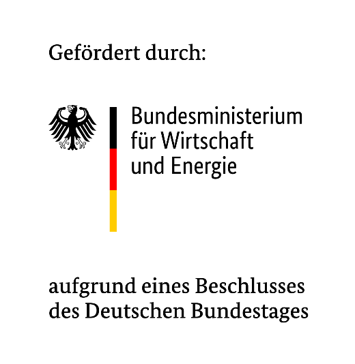
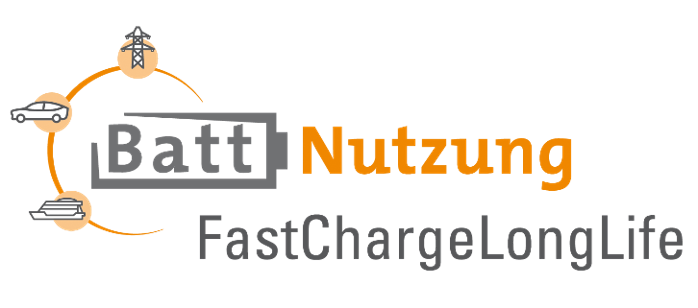
Motivation:
Fast charging of lithium-ion batteries is one of the key challenges facing electromobility in order to increase customer acceptance. The requirements for fast charging come from the respective application, but are often limited by the material system and cell design. In addition, the cell characteristics deteriorate as the battery ages. Fast charging processes in particular can lead to accelerated aging. Therefore, the operation limits are often designed very pessimistically in order to avoid safety-critical processes and accelerated aging. A promising alternative is the determination of age-dependent operating limits to adjust the fast charging strategy accordingly. However, this approach is associated with challenges, because an age-related adjustment of the operating limits depends on conditions of the material and cell system that cannot be measured directly.
Project description:
The model-based assessment of the fast charge ability for different materials of lithium-ion-batteries is investigated in "FastChargeLongLife". For this purpose, different novel electro-thermal and physicochemical models are developed and linked together. This enables the determination of the maximum operating limits and optimized fast charging strategies. These fast charging routines will be adaptively adjusted regarding the state of aging in order to prevent critical effects as lithium-plating. After certain cycle counts, some cells will be opened and investigated if critical aging effects occurred due to fast charging. So the models can be verified. The model-based approach enables the fast charging assessment along the complete cycle life of different materials within lithium-ion-batteries. This supports to increase the durability and to decrease the charging time.
| Partner: | InES – Institut für Energie- und Systemverfahrenstechnik |
| iPAT – Institut für Partikeltechnik | |
| Duration: | 10/01/2020 – 09/30/2023 |
| Person in charge at elenia: | Oliver Landrath |
| Head of project: | Prof. Kurrat |
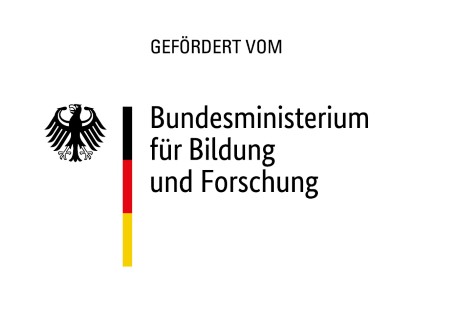

The Fleets Go Green project is designed to investigate the usability of electric and plug-in hybrid vehicles in fleet operation. A holistic analysis, i.e. from grid behavior to the suitability of electric vehicle fleets for everyday use, will be comprehensively investigate this topic. The elenia Institute for High Voltage Technology and Power Systems is participating in Module 3 Grid Behavior, which focuses on the analysis of the interactions between different vehicle fleets and the power grid. As a part of the project, an energy management system is will be developed that enables predictive charging control, considering local generation capacities and charging status information.
| Partner: | BS|Energy |
| imc Meßsysteme | |
| I+ME ACTIA GmbH | |
| iPoint-systems GmbH | |
| Lautlos durch Deutschland GmbH | |
| TLK-Thermo GmbH | |
| Volkswagen AG | |
| Niedersächsisches Forschungszentrum Fahrzeugtechnik | |
| Fraunhofer-Institut für Fertigungstechnik und Angewandte Materialforschung | |
| Person in charge at elenia: | Jan Mummel |
| Head of project: | Prof. Kurrat |


The research project flexess deals with the investigation of the grid- and market-serving use of future flexibility potentials. Under the coordination of the TU Braunschweig, new strategies and solutions for the exploitation of flexibility potentials in the four sectors of households, commerce, industry and electromobility are to be developed in the context of an electricity, heat and mobility transition. For this purpose, the flexibility potentials of the individual case studies will be modeled in detail and coupled via a co-simulation in order to identify interactions between flexibilities and to develop business models and product-service systems for flexibility utilization, among other things. In contrast to many previous projects in the field of energy flexibilization, flexess considers the entire system from an overarching perspective by looking at various representative case studies and thus considers symbioses across energy sectors.
To test the flexibility strategies, a demonstration in the laboratories of the university institutes as well as field tests at practice partners are planned. The knowledge and experience gained can be used to derive necessary regulatory framework conditions and to develop innovative business models for providers to enable more flexibility for the power grid in the future.
Further information can be found here:
| Partner: | Institut für Werkzeugmaschinen und Fertigungstechnik (TU Braunschweig) |
| SMA Solar Technology AG | |
| Carano Software Solution GmbH | |
| TLK-Thermo GmbH | |
| REWE Markt GmbH Zweigniederlassung Nord | |
| Berliner Verkehrsbetriebe (BVG) | |
| BS|ENERGY, Braunschweig Versorgungs-AG & Co.KG | |
| Associated Partner: | Braunschweiger Netz GmbH |
| TransnetBW GmbH | |
| GEWI AG | |
| Person in charge at elenia: | Christian Reinhold |
| Mattias Hadlak | |
| Jonathan Ries | |
| Head of project: | Prof. Engel |

FormEL is a research project within the battery production competence cluster ProZell. The main target of the cluster is to generate a research platform for a sustainable and competitive battery cell production in Germany. This target shall be reached by detailed investigations and studies of the process chain in order to evaluate the impact of the performance, quality and costs of battery cells. FormEL focuses on the final process steps of the formation and quality check (end-of-line-test).
FormEL adresses the investigation of process-quality-interdependencies between the formation process and the end-of-line-test with the aim of a functional integration of these final production processes of lithium-ion batteries. This will be performed by individual and coupled process simulation models of the formation and end-of-line quality check. Moreover, experimental parameter-studies will be carried out in order to determine sensitive process parameters. Afterwards a systematic optimization of the formation and end-of-line-test will be designed on the basis of the experimental studies and model-based simulations. These methods enable the optimization regards time, quality and costs. This will also reveal synergies in order to merge the two final production processes in order to save further process time and costs.
| Partner: | Uni Bayreuth - Methoden des Batteriemanagements (MBM) |
| WWU Münster - MEET Batterieforschungszentrum (MEET) | |
| RWTH Aachen - Production Engineering of E-Mobility Components (PEM) | |
| TU München - Lehrstuhl für Elektrische Energiespeicher (EES) | |
| Person in charge at elenia: | Robin Drees |
| Head of project: | Prof. Kurrat |
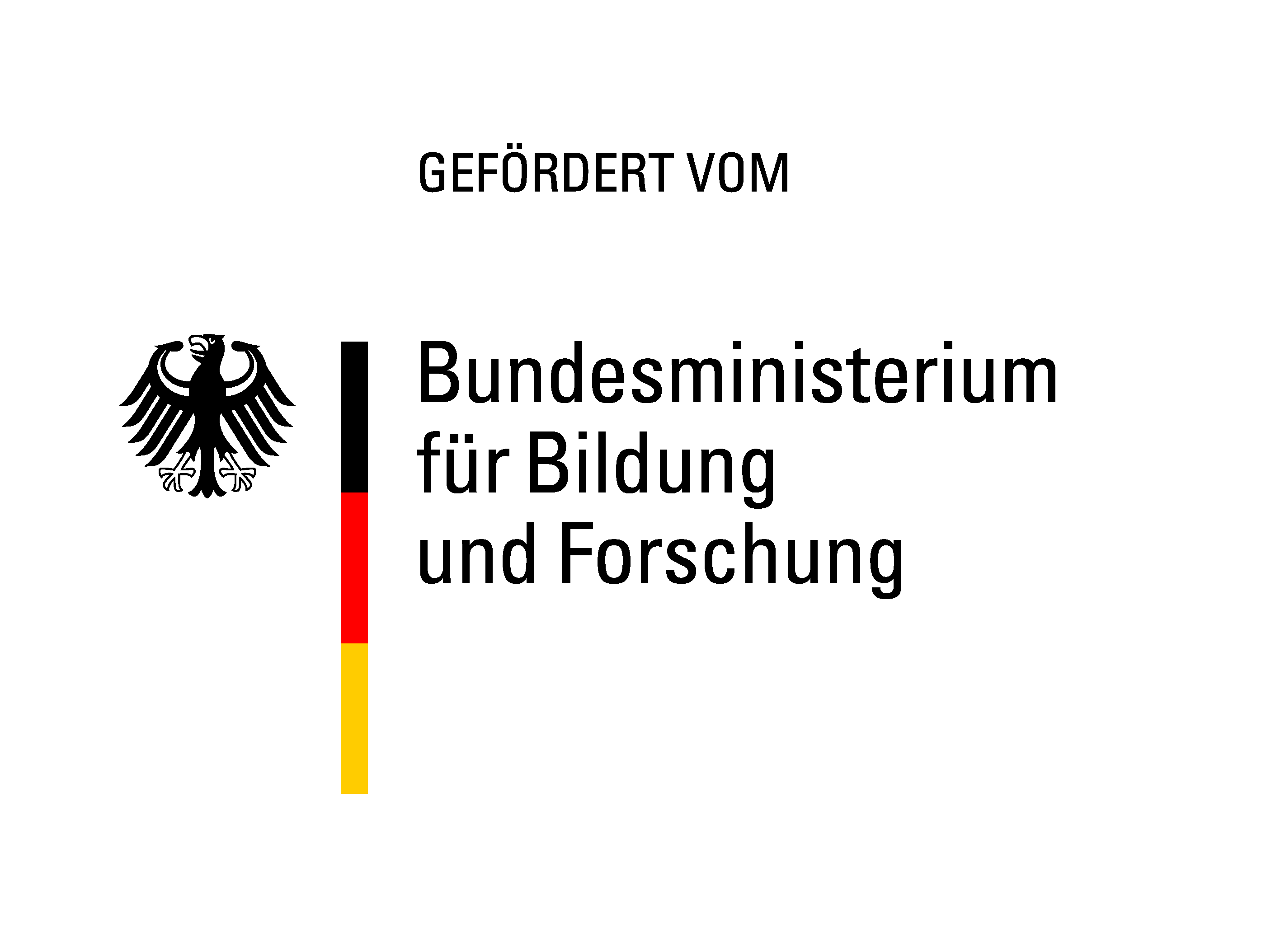
The Research Training Group "GEENI", funded by the Ministry of Science and Culture of Lower Saxony, is dedicated to the interdisciplinary question of how to ensure mobility without fossil fuels. In particular, the challenge is addressed to significantly improve the understanding of the processes in lithium-ion batteries by new or further developed preparative, analytical and numerical methods on different size scales and, based on this, to further develop this battery system on different levels.
A physical model will be developed based on measured impedance spectra of lithium-ion battery cells. The dependencies of the state of charge (SOC) and the temperature are determined to simulate different influences on the cell parameters. Based on this, the aging behavior of the cells as a function of the depth of discharge can be metrologically investigated during cycling with different charge and discharge currents. In this model, the determination of the state of charge as a function of temperature is the focus of this work, since it is the decisive variable for the determination of the parameter variables of the physical model.
| Partner: | TU Braunschweig (elenia, IPAT, IWF, ifs, InES, IÖNC) |
| TU Clausthal (IEE, MVT, IEPT, ICVT) | |
| LUH Hannover (ACI, PCI, TFD) | |
| WWU Münster (MEET) | |
| Uni Göttingen (IMP) | |
| HAWK Göttingen | |
| Uni Oldenburg (IfC) | |
| Fraunhofer (IFAM) | |
| Associated Partner: | PTB |
| Person in charge at elenia: | Uwe Westerhoff |


In the green2store project, decentralized storage units are combined via cloud. The cloud principle has been used in information technology for some time. In the research project, the installed storage units (8 home storage units with 5 to 9 kWh each, a local network storage unit with 270 kWh, an area storage unit with 135 kWh and one campus storage unit with 100 kWh) each serve their primary purpose. At times when the storage is not needed, the owner markets the capacity to other users via the cloud. In the project, elenia is investigating the earning potential of demand response customers via the cloud and the impact of cloud storage on the energy supply system.
| Partner: | EWE |
| EWE Netz | |
| Alcatel-Lucent | |
| Süwag Energie | |
| BTC | |
| ABB | |
| OFFIS | |
| NEXT ENERGY | |
| Person in charge at elenia: | Daniel Unger |
| Head of project: | Prof. Engel |


The project "HVBatCycle" has the overall objective of developing innovative, sustainable and energy-efficient processes along the value chain of high-voltage batteries from electric vehicles in order to enable the closed-loop recycling of battery materials in the near future. In particular, the processes for unmixed disassembly, ecologically efficient recycling of end-of-life batteries and the production of new battery materials from the recovered secondary raw materials will be developed. In addition, the project will demonstrate their scalability and economic viability. Through an interdisciplinary and highly qualified consortium, processes of an interlinked end-to-end value chain will be developed and led from the laboratory to a prototypical implementation. In addition, it will be tested whether the secondary materials produced are also suitable for reuse in the battery cell. In addition, incoming batteries will be presorted via a battery analysis with regard to a possible further use in 2nd life. The elenia is working on a detailed determination of cause-effect of the influence of secondary materials on the electrochemical cell performance. For this purpose, special small-format test cells as well as large-format pouch cells with specifically contaminated materials and secondary materials are electrochemically characterized and evaluated. Based on the results, a diagnostic tool will be developed to evaluate the cell performance from secondary materials.
| Partner: | IWF – Institute for Machine Tools and Production Technology (TU BS) |
| iPAT – Institute for Particle Technology (TU BS) | |
| ICTV – Institute for Chemical and Thermal Process Engineering (TU BS) | |
| InES – Institute for Energy and Process Systems Engineering (TU BS) | |
| PowerCo | Taniobis GmbH |
| J. Schmalz GmbH | |
| IME – Department of Process Metallurgy and Metal Recycling (RWTH Aachen) | |
| Viscom AG | |
| Fraunhofer IST | |
| Associated Partner: | Open Hybrid LabFactory e.V. (OHLF) |
| Advanced Measurement Technology, Inc. | |
| Otto Junker GmbH | |
| Duration: | 01/01/2022 – 12/31/2024 |
| Person in charge at elenia: | N.N. |
| Head of project: | Prof. Dr.-Ing. Michael Kurrat |
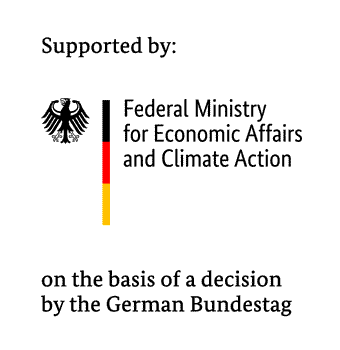
The goal of the IKTfree project is to make distribution grid operations in an increasingly networked energy system robust against disruption or failure of the ICT infrastructure. The avoidance of grid failures due to emergency operation of systems with interrupted or disturbed communication links is a key point here. At the very least, plant behavior that is not counterproductive in the event of grid reconstruction should also be taken into account. Against this background, existing equipment in the distribution grid that has an ICT connection and influences distribution grid operation will be analyzed. Based on this, use cases will be identified and risk analyses carried out in order to specifically identify critical paths within a smart grid. From this, measures for fault containment at the plant level and in the interconnection will be derived. In addition to simulative validation of selected measures and their stabilizing effects on distribution grid operation as well as services for superordinate grid levels, hardware-related laboratory tests are also carried out. Here, both individual components and system networks are taken into account. An intensive exchange of knowledge between theoretical preliminary considerations, simulations and laboratory tests is to ensure a high quality of results through frequent feedback loops and workshops. On this basis, recommendations for action are to be developed for politics, industry and grid operators, so that safety requirements and the definition of defined operating states from the perspective of grid operational safety can be incorporated into regulations, standards and plant operation management.
| Partner: | Deutsches Zentrum für Luft- und Raumfahrt (DLR) Institut für Vernetzte Energiesysteme e. V. |
| Person in charge at elenia: | Edwin Rebak |
| Head of Project: | Prof. Dr.-Ing. Bernd Engel |


The InduktivLaden/emilia project (electric mobility through inductive charging in cars) is the follow-up project to Primove/emil. The overall goal of the project is the joint use of inductive charging for public and individual transportation vehicles. Together with the Institute for Electrical Machines, Drives and Trains and the Institute for Traffic Safety and Automation Technology, three electric vehicles of the type eGolf will be converted so that they can be charged inductively with a power of 20 kW at the already existing charging infrastructure.
In addition to developing a charging sequence control system that emulates a charging station in the vehicle, elenia is investigating the integration of inductive high-performance charging with 200 kW in weak network spurs. For this purpose, network simulations are used to analyze the influence of charging stations on the voltage and operating resources in these network spurs. The aim is to find an optimized connection method to minimize the negative effects of charging.
| Partner: | Braunschweiger Verkehrs GmbH |
| BS|Energy | |
| Associated Partner: | Bombadier |
| Person in charge at elenia: | Jonas Wussow |
| Head of project: | Prof. Engel |

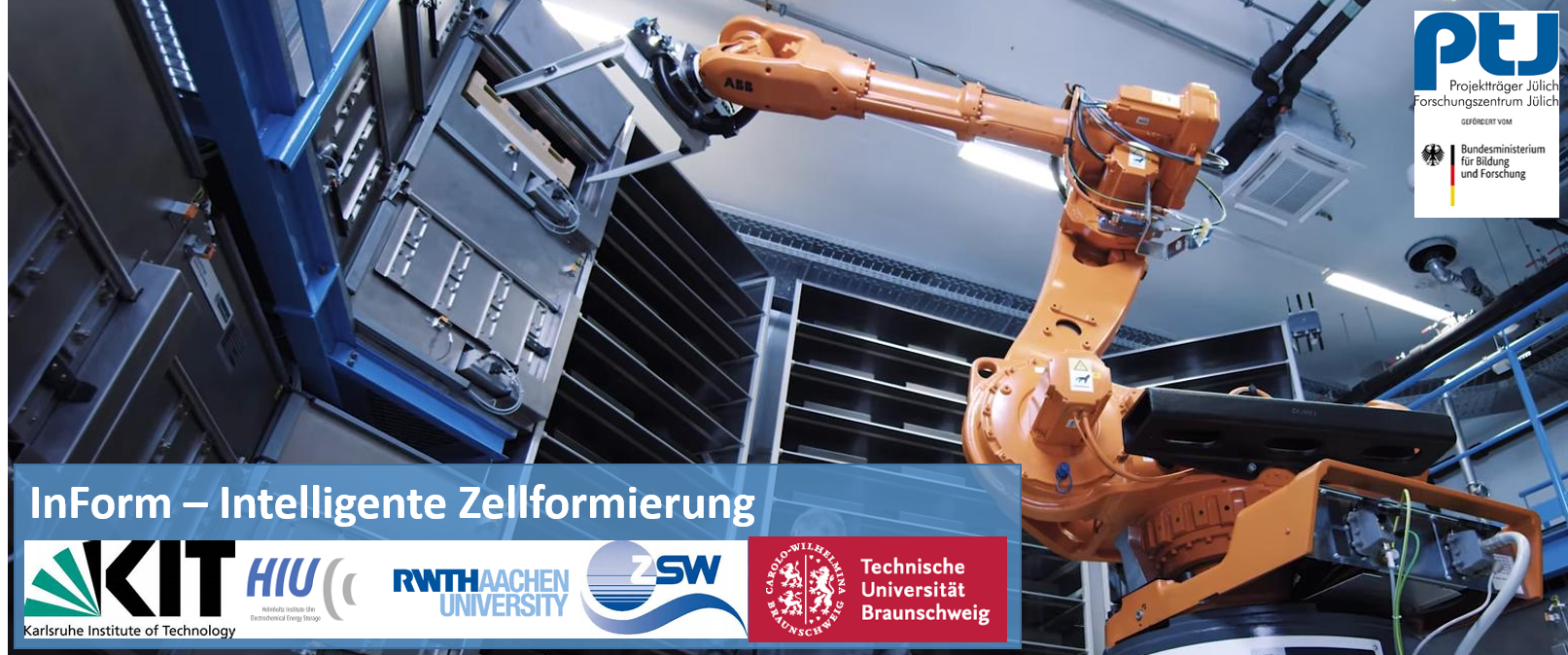
The boundary layers formed during formation (SEI and CEI) are decisive for the performance, safety and longevity of a battery. However, formation is an enormously time-, energy- and consequently cost-intensive production step in both research and industry. Since formation is tied to cell chemistry and individual cell parameters, individual optimization of the formation is also necessary. This individual optimization can be realized by means of an AI. This intelligent accelerated formation can reduce the start-up time, reduce the number of cell rejects, result in shorter occupancy times and lead overall to higher energy efficiency, also for the end user.
For more information click here.
| Partner: | Helmholtz-Institut Ulm - Elektrochemische Energiespeicherung (HIU) |
| RWTH Aachen - Production Engineering of E-Mobility Components (PEM) | |
| Zentrum für Sonnenenergie- und Wasserstoff-Forschung Baden-Württemberg (ZSW) - Produktionsforschung (ECP) | |
| Person in charge at elenia: | Torben Jennert |
| Head of project: | Prof. Dr.-Ing. Michael Kurrat |

Development of a guideline for the integrated planning and control of fleet, energy and charging infrastructure to achieve an ecological and economical operation of vehicle fleets under extreme conditions at the Lower Saxony Police.
Initial situation (and problem definition)
Police fleets are characterized by a large number of different vehicle types, a high number of vehicles and a high visibility of their vehicles. Due to the role model function of the police in society, a sustainable and environmentally friendly operation of these fleets through the use of new drive technologies is of particular relevance. As a result, police are leading the way in integrating battery electric vehicles (BEV) and plug-in hybrid vehicles (PHEV) into their fleets. Compared to conventionally powered vehicles, the use of BEVs and PHEVs is associated with long charging times, limited ranges, and a resulting limited vehicle availability. In addition, an energy and charging infrastructure is required to operate the vehicles. With the planned combined use of BEVs and PHEVs in operations and patrol, the police face the challenge of ensuring continuous operations with 24/7 vehicle availability. This creates a multitude of dependencies between the fleet, energy and charging infrastructure, and greatly increases the complexity of planning and control.
Goals and approach
In the "Silent&Ready" project, 50 BEVs and PHEVs will be put into operation and tested in the Lower Saxony police service for patrol duty, criminal investigation service and for administrative purposes. Accompanying scientific research will investigate the mobility and charging requirements of the different applications. Based on this, an integrated system for fleet planning and control as well as charging management will be developed to meet the special requirements of police operations. The challenge of the new planning and management system is to meet the extreme requirements - especially in the field and patrol service - such as unpredictable deployment times and scopes as well as the need for almost 24/7 availability.
The result of the project will be a guideline for the integrated planning as well as the ecological and economical operation of vehicle fleets under extreme operating conditions. This can support decision-makers in the planning, procurement and operation of electric vehicle fleets, especially under extreme operating conditions (e.g. further police fleets, but also fire or rescue services).
| Partner: | Institut für Automobilwirtschaft und Industrielle Produktion (AIP) |
| Institut für Hochspannungstechnik und elektrische Energieanlagen (elenia) | |
| Institut für Fahrzeugtechnik (IfF) | |
| Institut für Werkzeugmaschinen und Fertigungstechnik (IWF) | |
| Polizei Niedersachsen (Polizeidirektion Braunschweig) | |
| Duration: | 2016 until 2019 |
| Person in charge at elenia: | Olga Pronobis |
| Head of project: | Prof. Kurrat |

The research project LISA4CL (Charging - inductive, fast, autonomous for city logistics) deals with the developments of an inductive charging system with charging powers of at least 22 kW. The realization of this system is based on existing standards for inductive charging with lower powers. Thus, this charging infrastructure shall be downward compatible.
The second key issue of this project is the grid and system integration of this charging infrastructure. Without active control and/or regulation of the charging infrastructure, safe grid operation can no longer be guaranteed 100 percent. Appropriate approaches are being developed for this purpose and tested in simulations and in the laboratory.
The inductive charging system and the approaches to grid and system integration will be tested in a field test at the city logistics company "Fairsenden" in Berlin.
Further Information can be found here:
| Partner: | Institut für Elektrische Maschinen, Antriebe und Bahnen – IMAB (TU Braunschweig) |
| INTIS – Integrated Infrastructure Solutions GmbH | |
| Associated Partner | eMO Berliner Agentur für Elektromobilität |
| Fairsenden GmbH | |
| Volkswagen Nutzfahrzeuge | |
| Person in charge at elenia: | Gian-Luca Di Modica |
| Lukas Ebbert | |
| Head of project: | Prof. Engel |
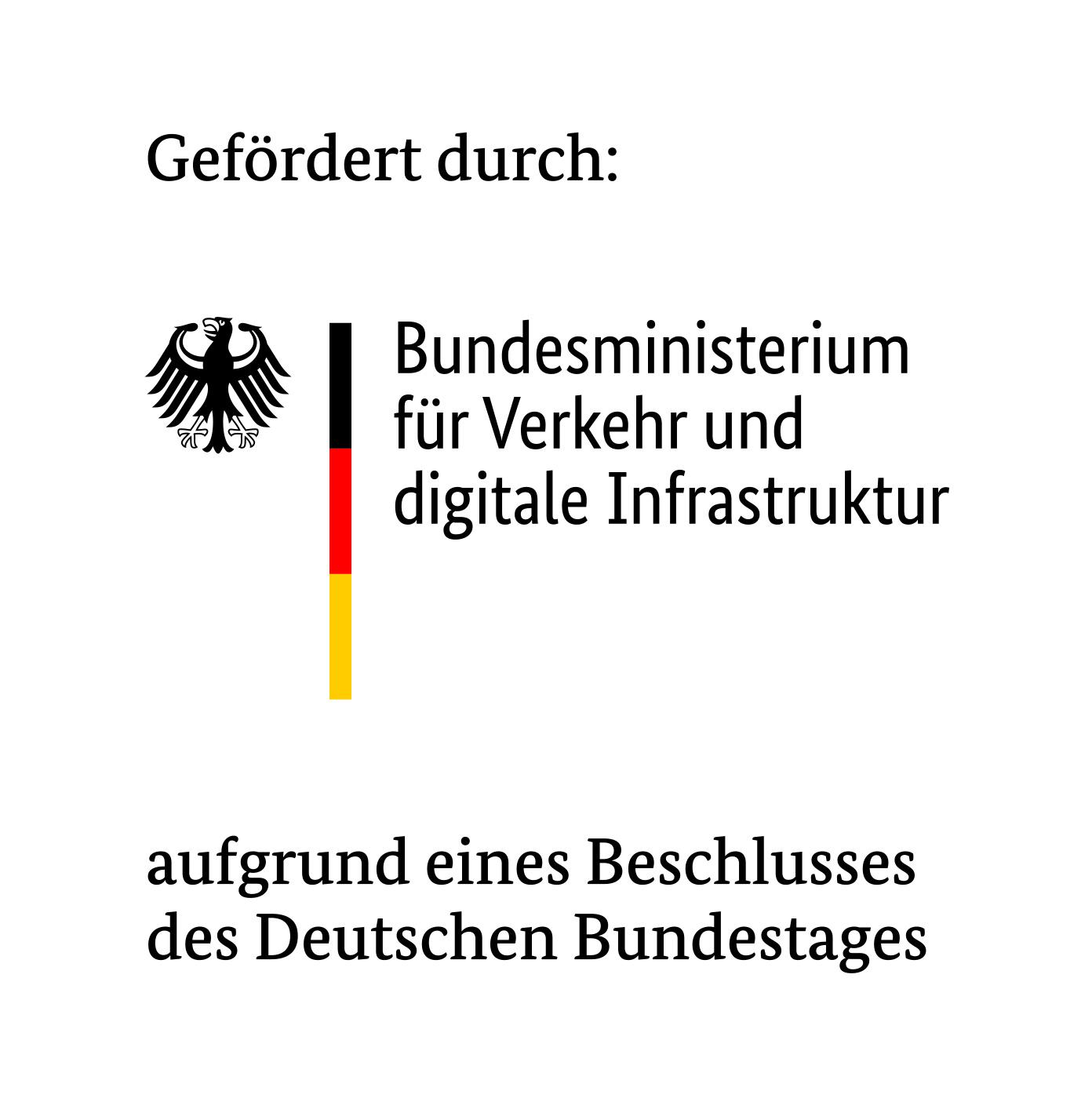

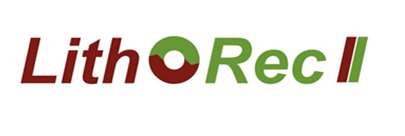
The LithoRec II project, funded by the German Federal Ministry for the Environment, Nature Conservation, Building and Nuclear Safety, aims to establish a pilot plant for recycling of lithium-ion batteries from electric vehicles. A hydrometallurgical process is to be used to produce secondary batteries of battery quality in order to ensure Germany's independence from raw materials such as lithium and cobalt and to close the material cycle. The project consists of several process steps, each of which is being investigated by different institutes and industrial partners. An ecological and economic evaluation will be carried out along all process steps. Elenia deals with the process step of battery discharge. Suitable discharge strategies for battery cells, modules and systems will be investigated in order to design the subsequent shredding and material recovery processes in a safe and optimal way.
| Partner: | TU Braunschweig (elenia, IPAT, IWF, ICTV, AIP) |
| Universität Münster (MEET) | |
| Volkswagen AG | |
| Audi AG | |
| I+ME ACTIA GmbH | |
| Electrocycling GmbH | |
| H.C. Starck GmbH | |
| Hosokawa Alpine AG | |
| Solvay Fluor GmbH | |
| Associated Partner: | Adam Opel AG (Opel) |
| Bosch Rexroth AG | |
| KUKA Roboter GmbH | |
| Lion Engineering UG | |
| Person in charge at elenia: | Daniel Hauck |
| Head of project: | Prof. Kurrat |
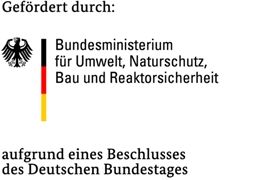
The MELANI research project, "Sustainable Integration of Multiple-Used Energy Storage in Multifamily Housing," aims to open up multi-story housing for storage use in combination with the use of renewable energies and new consumers from the heating and mobility sectors. The households in an apartment building share the generation plant and the storage system. The development of hardware and software is necessary for legally compliant metering as well as legally compliant billing, since the different energy purchases from the storage facility, the RE plant and the grid have to be recorded. In addition, the software solution offers a portal connection via which apartment users can manage their shares of the generation plant and storage facility themselves. This should enable tenants in particular, but also apartment owners, to access sustainable, locally generated energy. In addition, balancing effects can relieve the load on the grid.
Within the project, elenia is responsible for the development and testing of an innovative storage utilization concept by implementing novel operation and optimization strategies for building energy management systems in apartment buildings. In addition to simulation studies, the work includes a demonstrator setup in the elenia laboratories. The focus is on the development of a central data and control platform, which will also be used to implement the user interface. Furthermore, the developed solutions are to be examined in a field test in order to be able to prove the advantages of MELANI.
| Partner: | Naturstrom AG |
| Physikalisch-Technische Bundesanstalt | |
| SMA Solar Technology AG | |
| Associated Partner: | DZG Deutsche Zählergesellschaft Oranienburg mbH |
| IVU Softwareentwicklung GmbH | |
| GdW Bundesverband deutscher Wohnungs- und Immobilienunternehmen e.V. | |
| VDIV Verband der Immobilienverwalter Deutschland e.V. | |
| Person in charge at elenia: | Marcel Lüdecke |
| Michel Meinert | |
| Projekt Coordinator: | Dominic Jefferies (NATAG) |

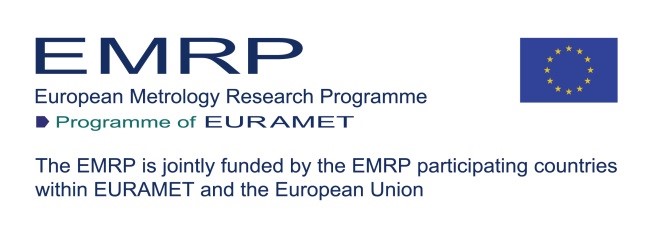
High-voltage direct-current (HVDC) transmission is a low-loss and economical way to transport electricity even over long distances and improves the stability of electrical grids. Its use is essential for the development of large renewable energy sources - such as offshore wind - for Europe's electricity production.
The EU-funded research project "EMRP ENG07 Metrology for HVDC" will improve the metrology infrastructure in the following areas: precise high-voltage DC measurements, loss determination in HVDC systems, on-site measurement of supply quality at HVDC stations, DC meters. The project is a joint effort of 7 European National metrology institutes, the Technical University of Braunschweig and the industrial partner Trench.
Together with PTB, elenia is developing methods and instruments for precise loss determination under the condition of fast measurement signals. This is necessary because modern converter valves perform fast switching operations at high voltages and high currents. Reliable loss determination and analysis of the valve operating behavior support converter optimization already in the development phase of a converter.
| Partner: | SP (Schweden) |
| I.N.RI.M (Italien) | |
| MIKES (Finnland) | |
| NPL (Großbritannien) | |
| PTB Braunschweig | |
| UME (Türkei) | |
| VSL (Niederlande) | |
| TU Braunschweig – elenia | |
| Trench (Schweden) | |
| Person in charge at elenia: | Vladimir Ermel |
| Ole Binder |
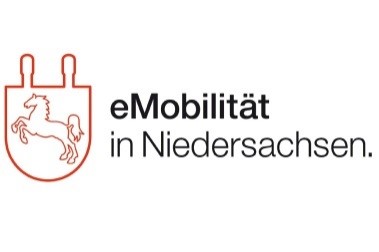
The project "Mobil4e– Mobilität elektrisch erleben, erfahren, erlernen“, which is supported by the Lower Saxony Showcase, aims to provide in-service and, in particular, timely continuing education and training on the topics of electromobility for numerous actors in academic professions. At the universities and universities of applied sciences in the "eMobility Metropolitan Region of Lower Saxony" showcase, a cross-university modular training and continuing education program is being created based on three different training tools: The continuing education modules convey the current state of the art in seminars; modeling and simulation tools are used on a virtual learning platform to familiarize participants with the design and management of mobility services; and the educational workshops offer the target group hands-on contact with the topic of electromobility. The joint project "Hochschuloffensive eMobilität" qualifies academics on the current topic of electromobility through experience and learning content.
| Partner: | TU Braunschweig (elenia, IPAT, IWF, InES, IÖNC, ifs, IFF, IK, IVB, IMAB, AIP) |
| Ostfalia – Hochschule für angewandte Wissenschaften | |
| Leibniz Universität Hannover | |
| TU Clausthal | |
| Hochschule für Bildende Künste Braunschweig | |
| Hochschule Hannover | |
| Person in charge at elenia: | Stephan Diekmann |
| Uwe Westerhoff | |
| Kerstin Kurbach | |
| Head of project: | Prof. Kurrat |
| Prof. Engel |

The new requirements (higher voltage levels, switching frequency) require a further development of the vacuum interrupter technology. To this end, new insights must be gained through simulations and experiments in order to better understand the propagation of the metal vapor plasmas and the movement of the local spots. The focus is on determining the current distributions in the contact gap. Together with the arc voltage and the sheath, current densities and plasma conductivities can be determined from the current distributions. These, together with the radiation and its spectral distribution, provide information about the temperature and pressure both in the plasma column and in the local spots. In this way, the knowledge of the behavior of metal vapor plasmas can be further developed and completed.
The main goal is to determine the current distribution in the contact gap as well as the current density distributions in the plasma column from the magnetic flux density profiles and the optical radiation intensity profiles. This involves the coupling and further development of magnetic and optical measurement methods. The simultaneous measurement of magnetic field and optical radiation allows to answer the question of where exactly the current flows, in the core or on the shell of the plasma column. From the radiation measurements, conclusions can be drawn about charge carrier densities and electron mobilities in the outer shell, since the radiation propagates diffusely in the plasma column, like in a fog. This requires the creation of a common experimental setup, the respective further development of the measurement methods, and the adaptation of the evaluation methods to allow the combination of both methods.
| Partner: | Fachgebiet Hochspannungstechnik der TU Darmstadt (HST) |
| Person in charge at elenia: | Benjamin Weber |
| Head of project: | Prof. Kurrat |


The project MozuBi "Modeling of Future Balancing Group Management" deals with the balancing group system as a decisive instrument for minimizing deviations between generation and consumption. In view of the challenges posed by the current transformations in the energy system, the issue of balancing group compliance has taken on a new relevance in terms of energy policy. Therefore, the Institute for High Voltage Technology and Electrical Power Systems (elenia), together with the Institute for Future Energy and Material Flow Systems (IZES gGmbH), is modeling and evaluating comprehensive changes in the balancing group system under different incentive structures for a balanced balancing group. In addition, the impacts on the energy (sub)markets will be analyzed. Therefore, a sub-goal of the project is the detailed simulation of the process chains for the individual actors using computer-based simulation tools in order to comprehensively analyze the interrelations and feedbacks in the balancing group system as well as the system boundaries under consideration of different development scenarios. The focus is on the identification of control variables and starting points in today's balancing group management in order to increase the balancing group loyalty of the players. Another goal of this project is to identify and analyze individual flexibility options and system parameters with respect to balancing. Furthermore, the effects of a higher balancing group loyalty will be considered in microeconomic calculations. Market distortions and misaligned incentives on the levels of balancing group management, energy markets and system services (control power) will be analyzed. The fundamental barriers, interactions and conflicts of interest in balancing group management have so far mostly been dealt with on an isolated basis. The project presented here is intended to take an overall systemic perspective and thus contribute to the optimization of the system transformation.
| Partner: | Institut für ZukunftsEnergie- und Stoffstromsysteme (IZES gGmbH)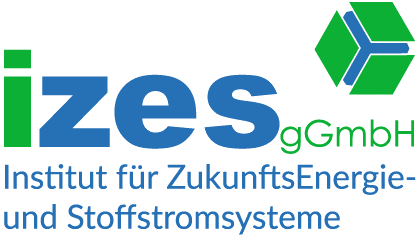 |
| Associated Partner: | TransnetBW |
| Westnetz | |
| EPEX Spot | |
| Bundesnetzagentur | |
| Energie- Einkaufs- und Service GmbH | |
| MVV Energie AG | |
| Stadtwerke Trier | |
| GEWI AG | |
| Person in charge at elenia: | Henrik Herr |
| Lily Kahl | |
| Head of project: | Prof. Engel |
| Gefördert durch: | Bundesministerium für Wirtschaft und Energie |
| FKZ 03ET4051B |


The research project "NEDS - Sustainable Energy Supply Lower Saxony" aims at the development and verification of scenarios for future sustainable energy supply for Lower Saxony based on renewable energies. For this purpose, technically feasible and optimal transition paths will be determined under sustainability criteria.
In this inter- and transdisciplinary project, a multi-criteria evaluation of possible energy supply structures and their transition paths from the current state to the desired structure will be carried out in the field of tension between technology, economy, ecology and society/social compatibility.
In this context, elenia deals with the sustainable development and integration of smart homes into the future energy supply of Lower Saxony. For this purpose, a modeling of residential load profiles based on different technologies is carried out with regard to the sustainable operation of the distribution and transmission grid. Own calculations in the low-voltage grid and the collection of ecological and economic key figures at the residential level are to enable a holistic multi-criteria evaluation of future Smart Homes.
| Partner: | Technische Universität Braunschweig (elenia, IPMB) |
| Leibniz-Universität Hannover (IEH, IUW) | |
| Universität Göttingen (Professur für Produktion und Logistik) | |
| OFFIS (FuE Bereich Energie) | |
| Universität Oldenburg (Lehrstuhl für Produktionswirtschaft und Umwelt) | |
| Person in charge at elenia: | Christian Reinhold Julia Seidel |
| Head of project: | Prof. Engel |

The subproject investigates grid-serving and power electronics issues for the control of electrical energy flows in future generator-storage systems in domestic and commercial environments (prosumers) with increased energy demand. In the future, low-cost, mass-produced HV-vehicle batteries will make the use of storage economically viable for large storage capacities. This requires optimized system technology and opens up new potential for the grid efficiency for prosumers. System technology includes the necessary energy converters (power electronics) as well as HV vehicle batteries, which were originally designed for use in mobile applications.
Three focus areas are identified:
| Partner: | IAV GmbH |
| SMA Solar Technology AG | |
| Head of project: | Prof. Mallwitz (IMAB) |
| Person in charge at elenia | Daniel Kehl |
| Jonathan Ries | |
| Jonas Wussow |

For power generation, generation plants are increasingly used today, which are predominantly coupled to the grid with power converters. For reasons of system security, however, conventional power plants must currently remain connected to the grid, as they are now almost exclusively responsible for ancillary services to ensure system stability. In the future, power converters will also have to perform these tasks. In the research project "Grid Control 2.0", the aim is to demonstrate grid stability assuming very large shares of converter-based power generation units and storage facilities, and to prepare for concrete implementation in the German interconnected grid. In this context, renewable energy plants with voltage-imprinting, grid-forming converters are distinguished from current-regulated plants. According to initial simulation results, the latter seem to be able to ensure system security even in the short-term range ("instantaneous" provision of instantaneous reserve) - assuming stable control procedures. The necessary distribution of these "new" generation units to the individual voltage levels, the exact control implementation in simulation and test bench trials, the risk consideration, the cost-benefit analysis and finally the correct implementation strategy are to be researched in the project "Grid Control 2.0".
| Partner: | Fraunhofer-Gesellschaft zur Förderung der angewandten Forschung e.V. |
| Das Fraunhofer - Institut für Energiewirtschaft und Energiesystemtechnik IEE | |
| Universität Kassel | |
| TenneT TSO GmbH | |
| SMA Solar Technology AG | |
| Associated Partner: | Forum Netztechnik/Netzbetrieb im VDE (FNN) VDE Verband der Elektrotechnik Elektronik Informationstechnik e. V. |
| Deutsche Energie-Agentur GmbH (dena) | |
| Amprion GmbH | |
| 50Hertz Transmission GmbH | |
| TransnetBW GmbH | |
| EWE Netz GmbH | |
| innogy SE | |
| Mitteldeutsche Netzgesellschaft Strom mbH | |
| ABB AG | |
| Siemens AG | |
| European Distributed Energy Resources Laboratories (DERlab) e. V. | |
| Person in charge at elenia: | Florian Rauscher |
| Björn Oliver Winter | |
| Heads of Project: | Fraunhofer-Gesellschaft zur Förderung der angewandten Forschung e.V. Das Fraunhofer - Institut für Energiewirtschaft und Energiesystemtechnik IEE |

NEWBIE addresses the 3 overarching goals (1), reduction of charging time (2) material and cost savings in battery design and (3) energy and cost savings in production. All objectives lead to a reduction of CO2 emissions in the battery life cycle and thus have a positive impact on the sustainability of battery cells.
The fast charging of battery cells, both in the manufacturing process and in operation, represents a key function in electromobility and has a significant impact on all three project goals. The overarching goal is therefore to determine the specific fast-charging capability of the cell material systems in order to set maximum operating limits. This will make it possible to significantly reduce the charging time without sacrificing service life.
An overarching goal is to reduce CO2 emissions and process costs by developing innovative and scalable electrode manufacturing methods. By using increased solid fractions in suspension production, the solvent fraction and thus also the drying energy is significantly reduced. At the same time, the continuous mixing system based on the twin-screw extruder leads to a saving of 60% of the process-specific mixing energy and a significant increase in throughput per machine unit compared to batch mixing (state of the art). Furthermore, due to the high solids content (highly viscous pastes), a further increase in throughput can be made possible by maximising the plant-specific throughput mixing/coating.
The process atmosphere used in the production processes has a significant influence on the quality of the intermediate and end products, as numerous materials undergo chemical reactions with the elements of the atmosphere (especially water), the reaction products of which lead to significantly reduced electrochemical performance. The conditioning of the process atmosphere used for this reason, e.g. dry room or inert gas as well as clean room environments, is both energy-intensive and cost-intensive, which is why a conditioning of the process atmosphere that is appropriate to the materials and processes developed and at the same time energy-efficient is being determined as part of the sub-project.
| Partner: | Mercedes-Benz AG |
| MAHLE International GmbH | |
| TRUMPF GmbH & Co. KG | |
| TU Braunschweig, iPat Institut für Partikeltechnik | |
| TU Braunschweig, IFS Institut für Füge- und Schweißtechnik | |
| TU Braunschweig, IWF Institut für Werkzeugmaschinen und Fertigungstechnik | |
| Duration: | 01.06.2021 – 30.06.2024 |
| Person in charge at elenia: | N.N. |
| Head of project: | Dr. Ümit Tastan, Mercedes Benz AG |

The goal of OptiZellForm (acceleration and energetic optimization of cell formation in the production of lithium-ion batteries by means of investigations into process-property relationships) is to develop an understanding of the process-effect relationships of forming strategies on the performance of a battery cell and to transfer this knowledge into a predictive model. With this in-depth understanding, characteristic properties of a cell, such as fast-charge capability, cycling stability, or charge-to-discharge energy efficiency, can be specifically influenced by the forming process. For the optimization of a holistic cell production, the knowledge of the process-property relationship leads to the possibility of shortening the forming process and the maturation time in order to reduce the cell cost and to increase the throughput of the produced cells. The goal of creating a predictive model is to minimize reject products when upstream process parameters are varied.
OptiZellForm is a research project in the Battery Cell Production Competence Cluster (ProZell). The central objective of the competence cluster is to create the scientific basis for sustainable, international cost and technology leadership by developing a profound scientific understanding of the production processes and their influences on performance and quality and costs of battery cells.
| Partner: | PEM – Production Engineering of E-Mobility Components (RWTH Aachen) |
| MEET Batterieforschungszentrum (WWU Münster) | |
| Person in charge at elenia: | Uwe Westerhoff |
| Head of project: | Prof. Kurrat |

Research project on metal-polymer current collectors to increase the safety of lithium-ion batteries
The goal of PolySafe is to increase the specific energy and safety of lithium-ion batteries through the use of innovative current collectors. The focus of the research is on metal-polymer composite current collectors, which make thermal runaway of battery cells more difficult and thus reduce the risk of fire.
The combination of metal layer and polymer substrate allows both weight/thickness advantages and economical use of material resources. In addition, the metal-polymer composite current collector can provide an intrinsic safety function by softening or melting the polymer in the event of an internal short circuit, thereby destroying the electronic conduction path, ultimately localizing the event and preventing thermal runaway of the entire cell.
The feasibility of manufacturing metal-polymer current collectors has already been demonstrated by VON ARDENNE GmbH and Fraunhofer FEP as part of the PolyCollect research project in Saxony, Germany. Using physical vapor deposition, aluminum layers up to 1 micrometer thick were deposited on polymer substrates up to 8 micrometer thick. The application-oriented evaluation of this technology is now taking place within the framework of PolySafe. The aim of this research project is to qualify a process chain adapted to the novel metal-polymer current collectors for the production of battery cells in different formats (round cell, pouch cell) and to investigate the safety advantage in different cell designs in an application-oriented manner.
In addition to the integration of the manufactured metal-polymer current collectors into battery cells, the project partners are adapting aluminum or copper-polymer current collectors to the requirements of the respective cell design. One challenge is to design the polymer substrates and the coating process in such a way that a thickness comparable to current metal foils as well as optimal electrical conductivity of the metal layer are ensured. In addition, the production costs of the current collectors must be reduced to a competitive level.
Joint project within the framework of the BMBF funding guideline "Battery 2020 Transfer"
| Partner: | VON ARDENNE GmbH |
| Brückner Maschinenbau GmbH & Co. KG | |
| Fraunhofer-Institut für Organische Elektronik, Elektronenstrahl- und Plasmatechnik FEP | |
| Fraunhofer-Institut für Schicht- und Oberflächentechnik IST | |
| TU Braunschweig, Battery LabFactory Braunschweig | |
| TU Braunschweig, iPAT Institut für Partikeltechnologie | |
| TU Braunschweig, IWF Institut für Werkzeugmaschinen und Fertigungstechnik | |
| TU Braunschweig, IFs Institut für Schweißtechnik | |
| Varta Microbattery GmbH | |
| Duration: | 01.06.2021 – 30.05.2024 |
| Person in charge at elenia: | Merit Holdorf |
| Head of the project: | Dr. Markus Piwko (VON ARDENNE GmbH) |

The PV Controller research project investigates how photovoltaic systems can contribute to the provision of balancing power for stable and cost-efficient grid operation in the future. Furthermore, the role of these photovoltaic systems in grid reconstruction will be analyzed. For this purpose, a holistic system optimization will be carried out, taking into account the higher-level grid concepts, the changing power generation mix, future market conditions, the necessary information and communication technology as well as the potentials and necessary modifications of the distributed PV systems. After the development of concepts for the balancing power provision and the verification of balancing power, the developed balancing power capable inverters will be evaluated in the laboratory level and in field tests.
| Partner: | SMA Solar Technology AG |
| GEWI AG | |
| Associated Partner: | 50Hertz Transmission GmbH |
| Amprion GmbH | |
| TenneT TSO GmbH | |
| TransnetBW GmbH | |
| Person in charge at elenia: | Björn Osterkamp |
| Julia Seidel | |
| Head of project: | Prof. Engel |

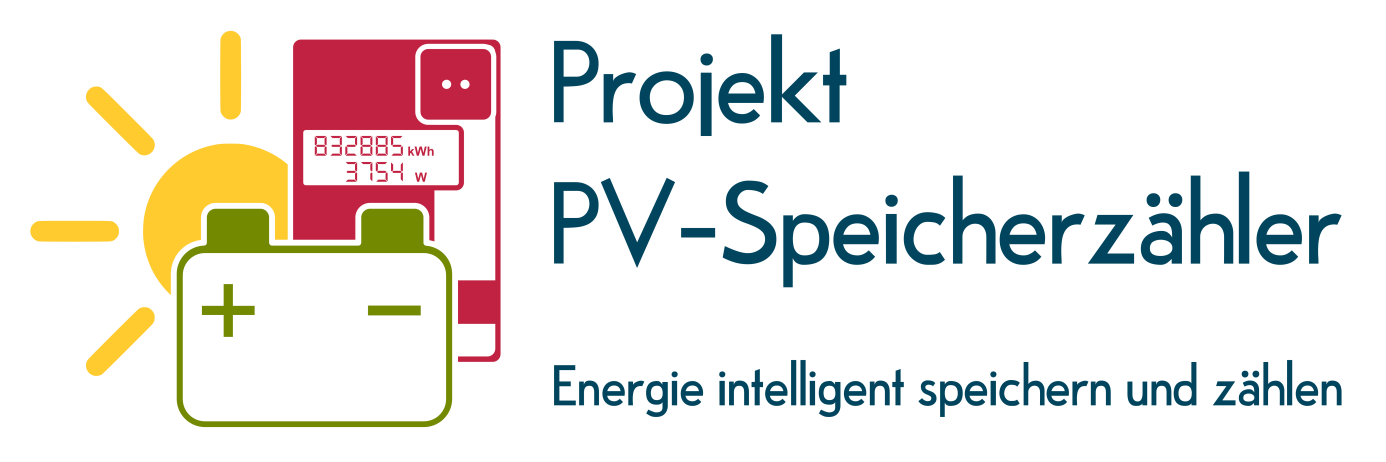
The aim of the project is to investigate how PV storage systems for own use can be made accessible to third parties through innovative metering systems and integrated into the energy industry in order to increase the economic efficiency of these PV storage systems. The aim is to create the possibility to individually measure and bill the different energy purchases and deliveries, as well as to record grid quality parameters in an appropriate form. On the one hand, the metrological, legal and information technology aspects will be taken into account and, on the other hand, the requirements of the energy industry for the operation and grid efficiency of such multi-use storage systems will be considered. This will be done by an interdisciplinary consortium of the PV industry-, meter manufacturers, meter operators, the energy industry and academia.
| Partner: | Physikalisch-Technische Bundesanstalt |
| EMH Metering GmbH & Co. KG | |
| SMA Solar Technology AG | |
| enconsys GmbH | |
| Associated Partner: | Stadtwerke München GmbH |
| Person in charge at elenia: | Frank Soyck |
| Franziska Funck | |
| Projektleiter: | Prof. Engel |

As a result of the displacement of large power plants, the need for provision of reactive power through decentralized power generation systems is increasing. In particular, photovoltaic and wind power plants connected directly to the high-voltage level can make a significant contribution to grid regulation. Until now, this has been based on the current feed-in guidelines, which require a limited amount of reactive power to be fed into the grid. The "PV-Wind Symbiosis" research project aims to significantly expand this functionality. It will be investigated how the joint operation of a wind and a PV power plant can contribute to a more efficient reactive power supply. For this purpose, measurement campaigns will be realized in a pilot plant, new control strategies will be implemented, and extensive grid simulations will be performed.
Together with Fraunhofer ISE and partners from industry, elenia is investigating the grid control potential of combining a wind power plant with a PV power plant. The result is an area power plant that uses the different high phases of power generation from sun and wind for the most efficient reactive power management. The concept can be tested under real conditions in terms of system stability, losses, harmonic emissions and cost structure by measurements and controller adjustments on a pilot plant. In addition, simulations will be performed to assess the impact on extended grid areas and to develop suitable grid management strategies. This information can then be used to evaluate the marketability of the reactive power from area power plants. The aim is to increase the usability of PV and wind power plants for the control operation of the energy grid and to propose suitable technical solutions, control strategies and remuneration models. The activities are part of the effort to design a power grid that can be operated in a stable and reliable manner even with 100 % renewable energies and that guarantees security of supply.
| Partner: | Fraunhofer ISE |
| Associated Partner: | ENERCON GmbH MITNETZ STROM mbH SMA AG |
| Person in charge at elenia: | Hartmudt Köppe |
| Merten Schuster | |
| Head of project: | Sönke Rogalla Fraunhofer ISE |

In the course of the energy transition, existing concepts of grid operation must be adapted and new ones developed. In particular, reactive power management will change significantly. In the future, more reactive power will have to be provided from the distribution grid to cover the demand for reactive power. For this purpose, competitive reactive power sources need to be established in the distribution network. This potential is to be harnessed in Q-Integral. An important sub-goal of the project is the development of a central approach for reactive power management. In this approach, usable reactive power sources (compensation plants, renewable energy systems, industrial facilities, ...) from the medium voltage to the extra-high voltage level are integrated with their technical and economic parameters. The sources are then mapped in terms of availability and controllability, and the economically optimal use in grid operation management is investigated, taking into account the static and dynamic current and voltage limits. In order to ensure the supply of reactive power even during a communication failure, suitable fallback strategies for reactive power management are to be developed and their effects investigated in more detail. Additionally, a methodology will be developed to forecast the reactive power demand and to reduce the overall forecast deviations. The use of alternative reactive power sources such as renewable energy plants and industrial compensation systems requires knowledge of their economic costs. Therefore, another sub-goal is the comparative evaluation of different provision options and the regulatory framework conditions for the use of these sources will be investigated.
| Partner: | Fraunhofer ISE |
| OTH Regensburg | |
| KBR Kompensationsanlagenbau | |
| TenneT TSO GmbH | |
| SMA Solar Technology AG | |
| Associated Partner: | 50Hertz Transmission GmbH |
| E.DIS Netz GmbH | |
| TEN Thüringer Energienetze GmbH & Co. KG | |
| WEMAG Netz GmbH | |
| SCADA International Deutschland GmbH | |
| SIEMENS AG | |
| SIEMENS AG | |
| Person in charge at elenia: | Hartmudt Köppe |
| Merten Schuster | |
| Head of Project: | Prof. Engel |

The aim of QuEEP (Quality Enhancement and Shortening of Energy Storage Development Cycles by Increasing the Efficiency of Product and Process Research) is to expand SU's equipment in the form of plant technologies in order to significantly increase both the number of possible results and thus the statistical reliability of statements as well as the quality of the results. The results generated by the intensive use of the equipment expansion can be transferred to various energy storage systems, which in turn leads to faster product and downstream process development. This particularly strengthens process and manufacturing technology studies for electrodes and cells, which require the analysis of a large number of variations.
| Partner: | iPAT – Institut für Partikeltechnik (TU BS) |
| IWF – Institut für Werkzeugmaschinen und Fertigungstechnik (TU BS) | |
| Person in charge at elenia: | Uwe Westerhoff |
| Head of project: | Prof. Kurrat |


The research project "SiNED - Ancillary Services for Reliable Power Grids in Times of Progressive German Energiewende and Digital Transformation" aims to investigate the necessary adaptations of ancillary services to the changed requirements due to digitalization and advanced energy transition. Solutions for the secure operation of future power grids - taking into account the special situation in Lower Saxony - are being developed and reviewed. Especially for the wind-strong regions of Lower Saxony, it is of particular importance to find improved solutions for ancillary services to cope with volatile feed-in and for congestion management by electrical storage systems and switchable loads.
Up to now, the ancillary services (SDL) for secure operation of the power grids - e.g., control power, reactive power provision, and other grid-supporting services (inertia, short-circuit power) - have been provided primarily by the synchronous generators of large power plants for decades. In the future, these ancillary services will have to be provided by a large number of decentralized sources and loads in the distribution grids as part of a cross-sector energy transition. The increasing demands on the extent and resilience of the digitization of the energy system as a result of this also lead to new requirements for the economic and legal framework conditions of the future energy supply system.
All necessary adjustments are being investigated due to closely networked interdisciplinary areas of expertise. In this way, both the system, grid, and information technology aspects of ancillary service provision as well as the associated issues in terms of economy and energy law can be illuminated.
| Partner: | Institut für Vernetzte Energiesysteme, DLR |
| Institut für Elektrische Energiesysteme, LUH | |
| Institut für Systems Engineering, LUH | |
| Institut für Wirtschaftsinformatik, LUH | |
| OFFIS e.V. | |
| Institut für deutsches und internationales Berg- und Energierecht, TU Clausthal | |
| Person in charge at elenia: | Melanie Hoffmann |
| Cornelius Biedermann | |
| Marc-René Lotz | |
| Carsten Wegkamp | |
| Head of project: | Prof. Engel |

Grid integration of decentralized energy systems such as photovoltaic systems, battery storage or offshore wind farms is necessary to expand the use of renewable energy. What these modular generator systems have in common is the use of DC circuits. For highly efficient operation, it is important to control the highest possible system voltage for the respective voltage range and to minimize conversion losses.
In current concepts, high-power switches are provided for series connection of submodules of the decentralized power supply systems. Due to the interconnection of the modules, safety switches with high switching capacity have to be developed at high cost and technical effort. The modular design of decentralized power supply systems offers the oppurtunity for a paradigm shift and for an intelligent solution to the switching task. The concept of "Smart Modular Switchgear" is based on many DC switches connecting individual modules. In order to switch off a fault current of all submodules, several switches have to share the switching task. The ability to switch off the individual submodules extends and improves the safety functions, even in the case of faults between the submodules.
The "Smart Modular Switchgear" research project is therefore concerned with the research and development of switching and protection concepts for use in DC networks with different voltage levels.
| Partner: | Physikalisch-Technische Bundesanstalt (PTB) |
| E-T-A Elektrotechnische Apparate GmbH | |
| Person in charge at elenia: | Christoph Klosinski |
| Nasser Hemdan | |
| Lorenz Soleymani | |
| Head of project: | Prof. Kurrat |

In the course of the energy transition, DC networks are becoming increasingly important for the integration of renewable energies and the power supply of modern industrial applications. At the same time, due to the change from a centralized to a decentralized supply structure, the requirements for protection systems for DC networks are increasing, resulting in new challenges such as bidirectional load flows, rapid fault current increases and the influence of the occurring fault current characteristics, which have hardly been investigated so far.
The research project SMS II - Smart Modular Switchgear II aims at the development and integration of an intelligent switching and protection concept adapted to these new challenges. In the event of a fault, it should independently perform fault detection, characterization, localization and coordination of the switching action (selective switching).
To investigate the overall system, an industry-oriented, cross-voltage demonstration network up to the medium-voltage level (3 kV DC) is being set up at elenia. This will be used to characterize the DC network in which the protection system will be tested in various operating scenarios. Other important sub-objectives of the project are the design, development and optimization of efficient MVDC hybrid switchgear as actuators for the protection system as well as the development of suitable sensor technology for the detection of fast transient as well as stationary events. Since power electronic components are often used in modern DC networks and these can cause high-frequency and broadband EMC disturbances, a characterization and evaluation of the RF properties of the MVDC network is also carried out.
| Partner: | Physikalisch-Technische Bundesanstalt (PTB) |
| E-T-A Elektrotechnische Apparate GmbH | |
| IMAB – Institut für Elektrische Maschinen und Antriebe (TU BS) | |
| IEMV – Institut für Elektromagnetische Verträglichkeit (TU BS) | |
| Associated Partner: | Phoenix Contact GmbH & Co. KG |
| Siemens AG | |
| Person in charge at elenia: | Frederik Anspach |
| Lars Claaßen | |
| Patrick Vieth | |
| Head of project: | Prof. Kurrat |


The U-Control project "Technical and Economic Comparison of Static Voltage Maintenance Procedures" investigates which types of voltage maintenance concepts can be operated safely, robustly and economically in distribution grids and can contribute to increasing the integration potential of decentralized generators. Special attention will be paid to the combination of different voltage maintenance methods in grid operation.
In total, the following methods will be investigated: cosφ(P), fester cosφ, festes Q, Q(U), P(U), NS-STATCOM, rONT, single string regulator and feed-in management. In the project, elenia will perform simulations and laboratory tests on the dynamic behavior of these methods, as well as investigate selected methods in a field test and perform an economic evaluation.
| Partner: | RWTH Aachen |
| TU München | |
| FGH Aachen | |
| SMA Solar Technology AG | |
| Maschinenfabrik Reinhausen | |
| Netze BW | |
| Bayernwerk | |
| Infrawest | |
| Person in charge at elenia: | Ole Marggraf |
| Stefan Laudahn | |
| Head of project: | Prof. Engel |

Further information can be found on the project page:
| Person in charge at elenia: | Cornelius Biedermann |
| Head of project: | Prof. Engel |

Low-wear and compact hybrid circuit breaker with high power density for use in DC and AC distribution networks for system integration of renewable energies.
The restructuring of the German energy supply requires the integration of renewable energies. For efficient operation, the growing number of large-scale plants must be able to be switched on and off with appropriate energy management strategies. To achieve high efficiencies, generator and storage modules such as PV systems, fuel cells, batteries and redox flow storage are coupled with centralized high-voltage DC and AC network structures. Compact, powerful and low-maintenance circuit breakers are required to ensure safe operation.
Objective:
An optimized circuit breaker is being developed in UPS in a joint project between industry and science. The hybrid switch represents a new concept of mechanical switching device and power semiconductor in a low arc switch. It has advantages in terms of life expectancy (wear), switching capacity (power density) and size compared to conventional switching devices.
| Partner: | Elektrotechnische Apparate GmbH (E-T-A), Altdorf |
| Physikalisch Technische Bundesanstalt (PTB), Braunschweig | |
| Associated Partner: | Rockwell Automation GmbH Switzerland, Aarau |
| Person in charge at elenia: | Tobias Kopp |
| Dirk Bösche | |
| Head of project: | Prof. Kurrat |

Questions and problems related to the future integration of electric vehicles (EVs) with the goal of CO2-free charging at the balancing group level are addressed. Due to the fact that the energy supply from wind and photovoltaic plants is subject to uncertainties regarding the quality of the day-ahead forecast, an increased integration of renewable energies in a balancing group leads to an increased demand for balancing energy. By adding controllable cogeneration units, deviations from the schedule can be specifically regulated out. This can reduce or eliminate the need for balancing energy. In addition, it is possible to compensate for the forecast uncertainties resulting from the uncertain charging behavior of electric vehicles.
| Partner: | Volkswagen Kraftwerk GmbH |
| Person in charge at elenia: | Arne Dammasch |
| Hartmudt Köppe | |
| Prof. Bernd Engel | |
| Projektleiter: | Prof. Engel |

Vacancies of TU Braunschweig
Career Service' Job Exchange
Merchandising
Term Dates
Courses
Degree Programmes
Information for Freshman
TUCard
Technische Universität Braunschweig
Universitätsplatz 2
38106 Braunschweig
P. O. Box: 38092 Braunschweig
GERMANY
Phone: +49 (0) 531 391-0
